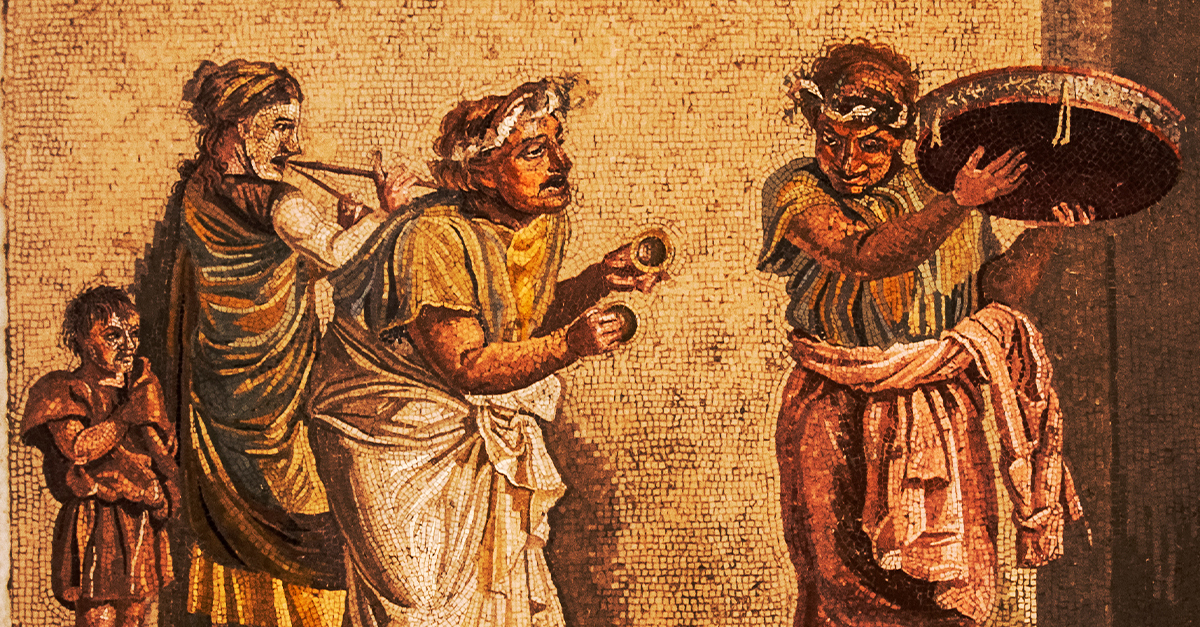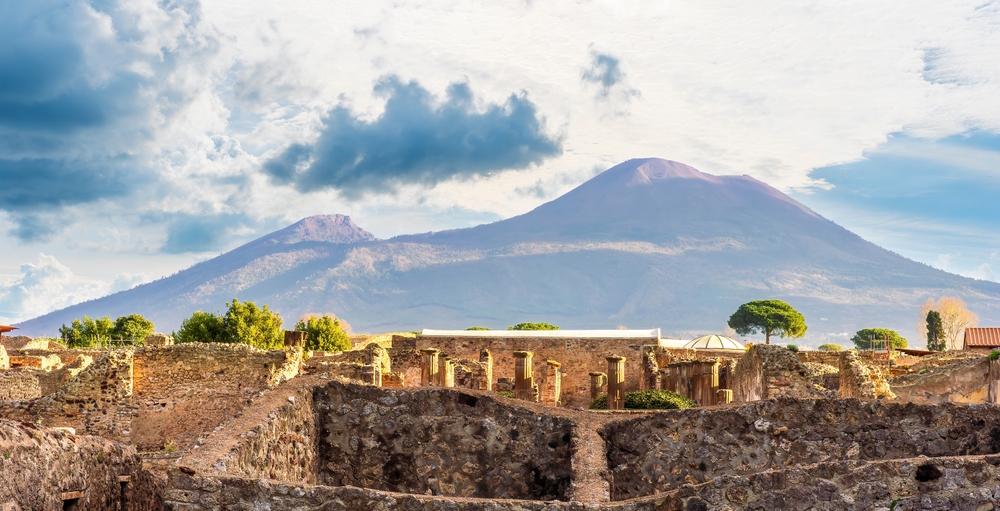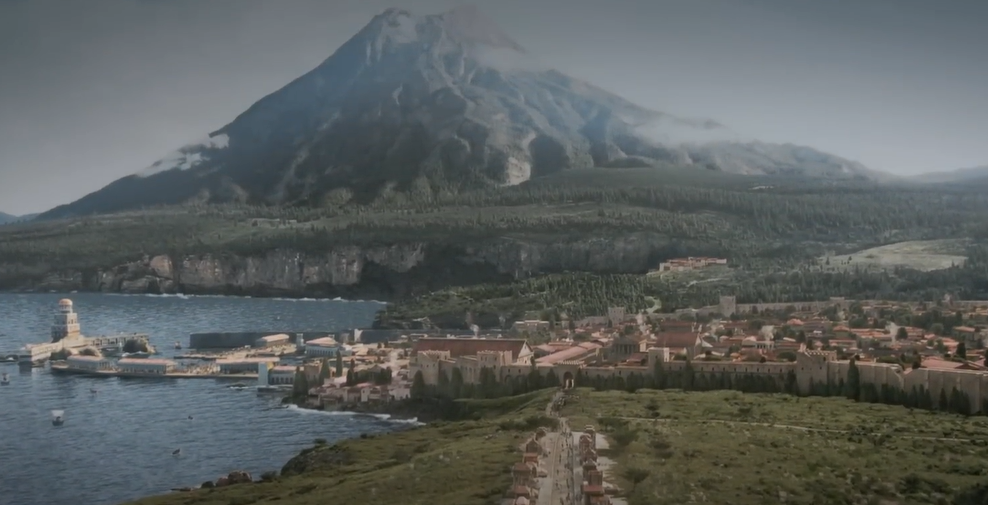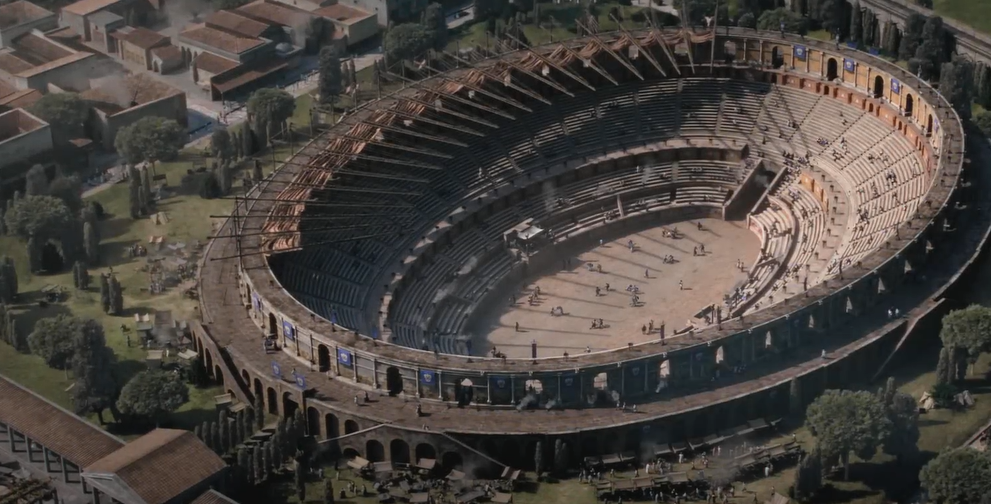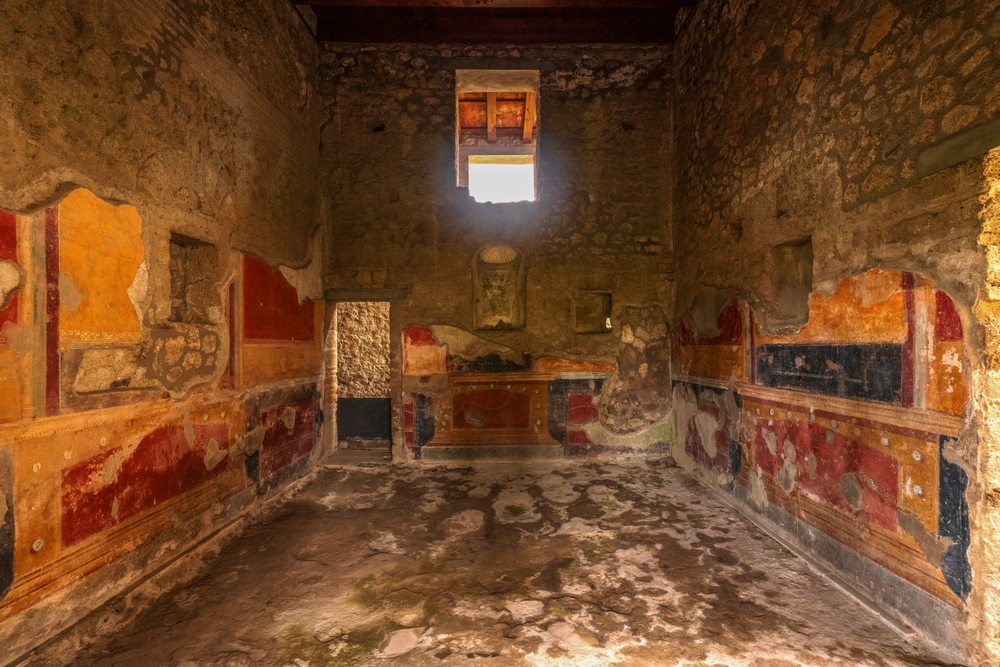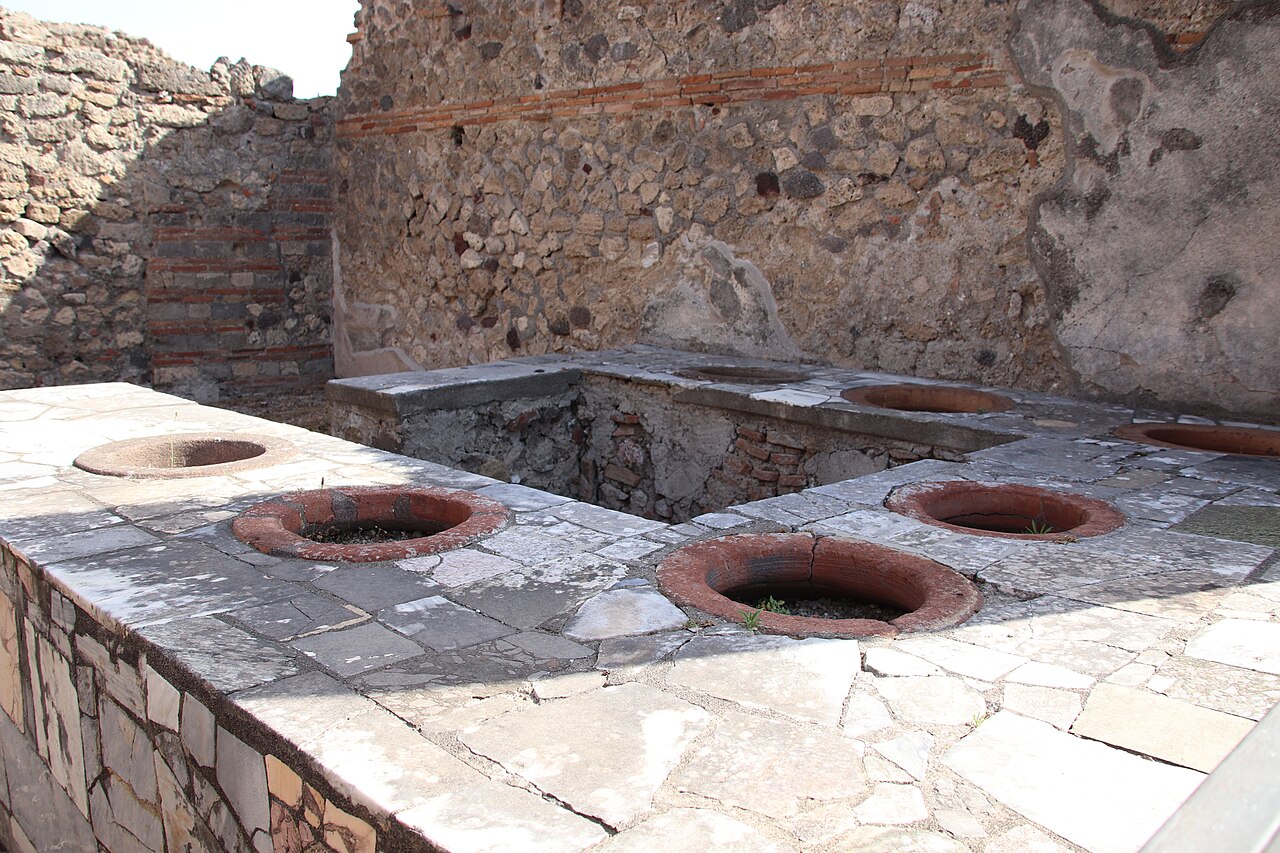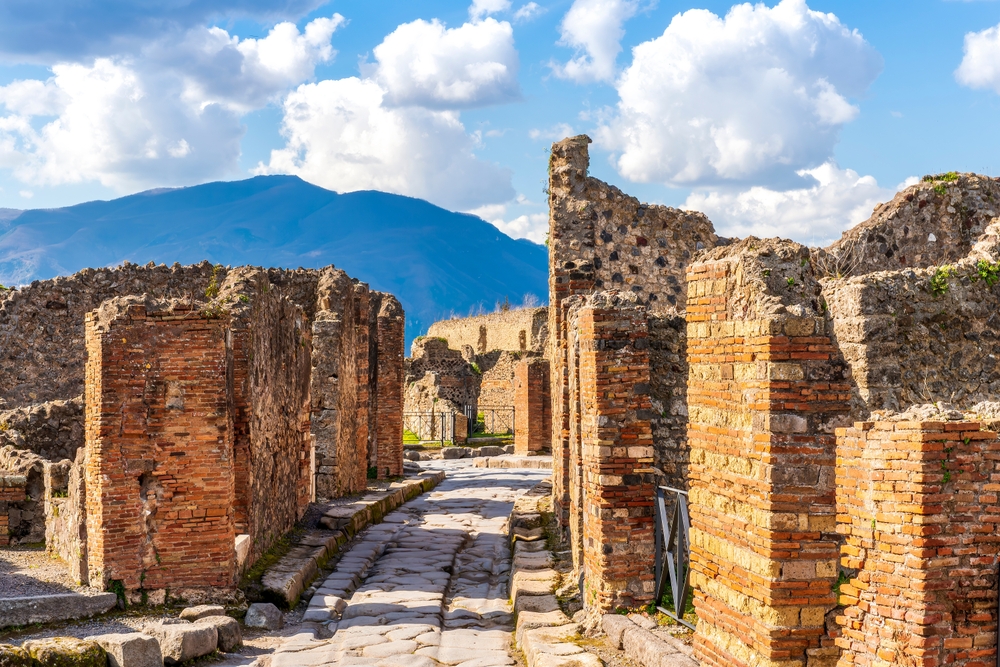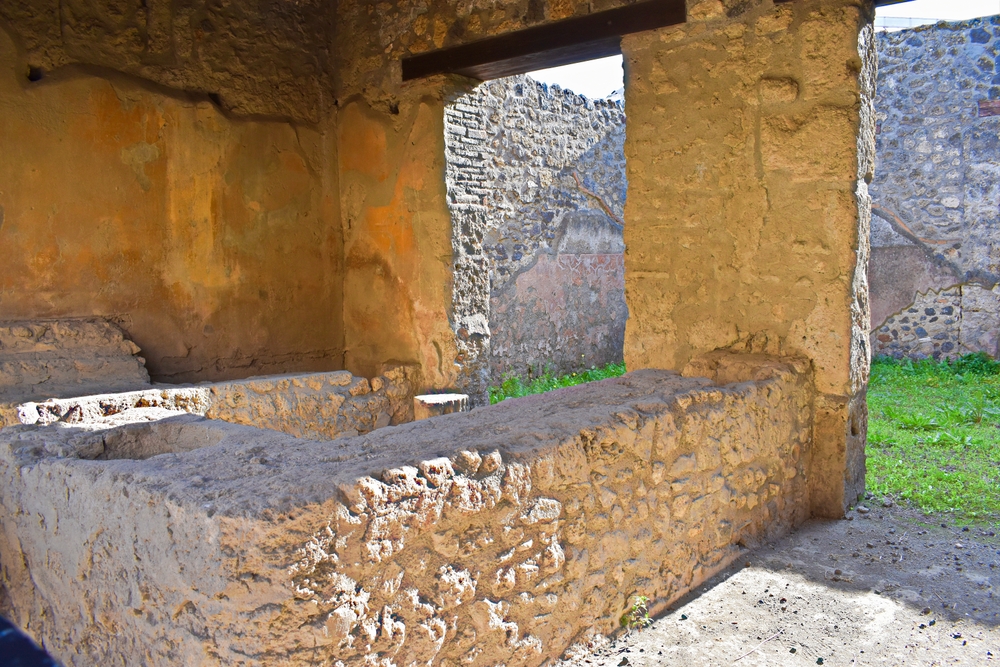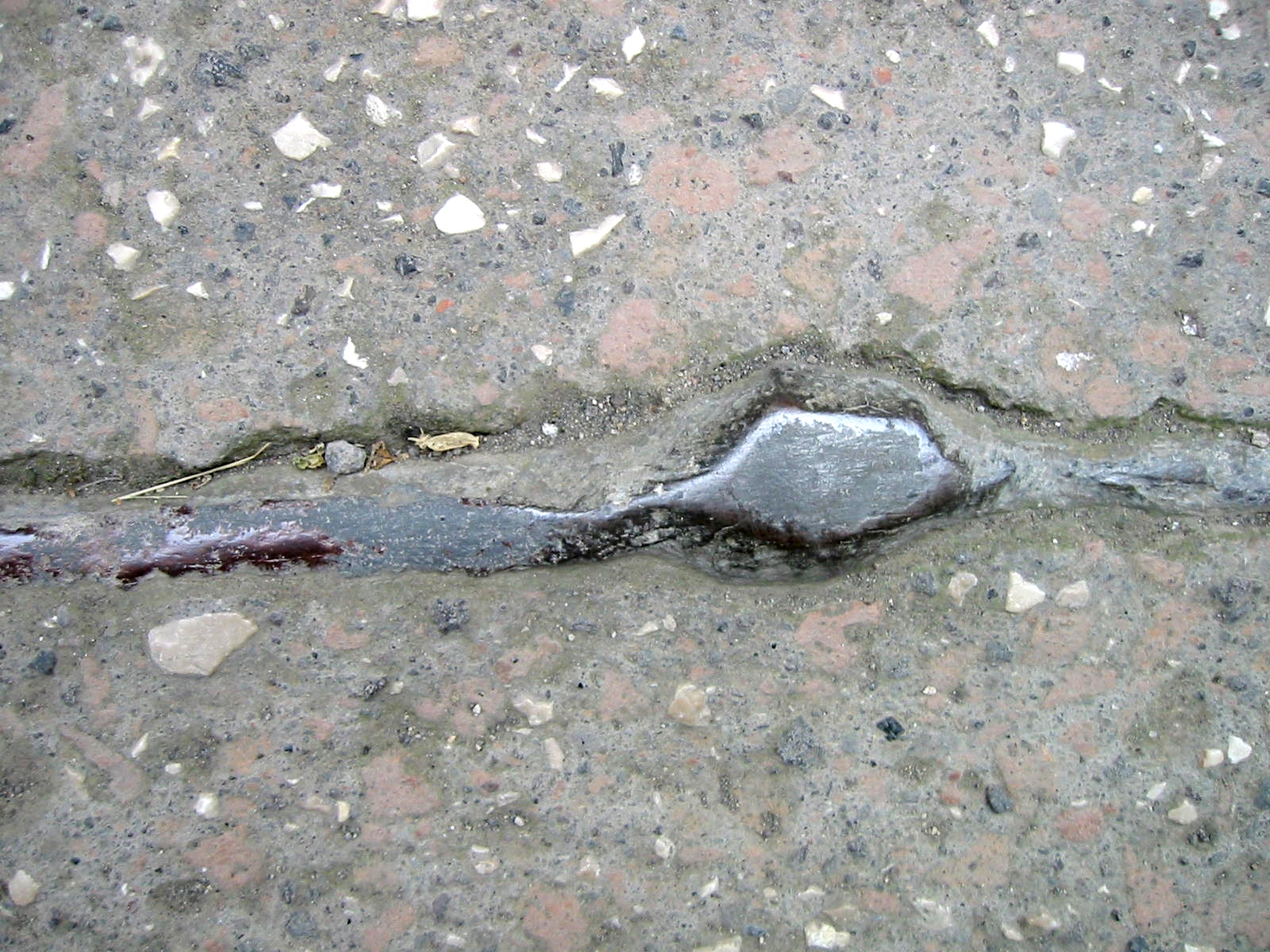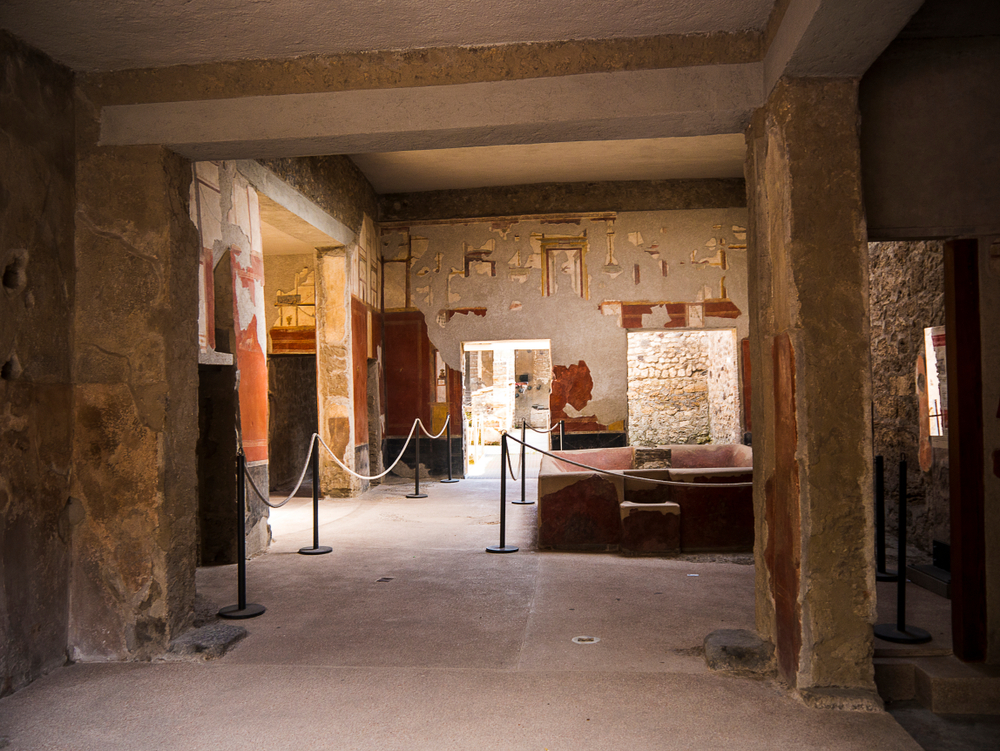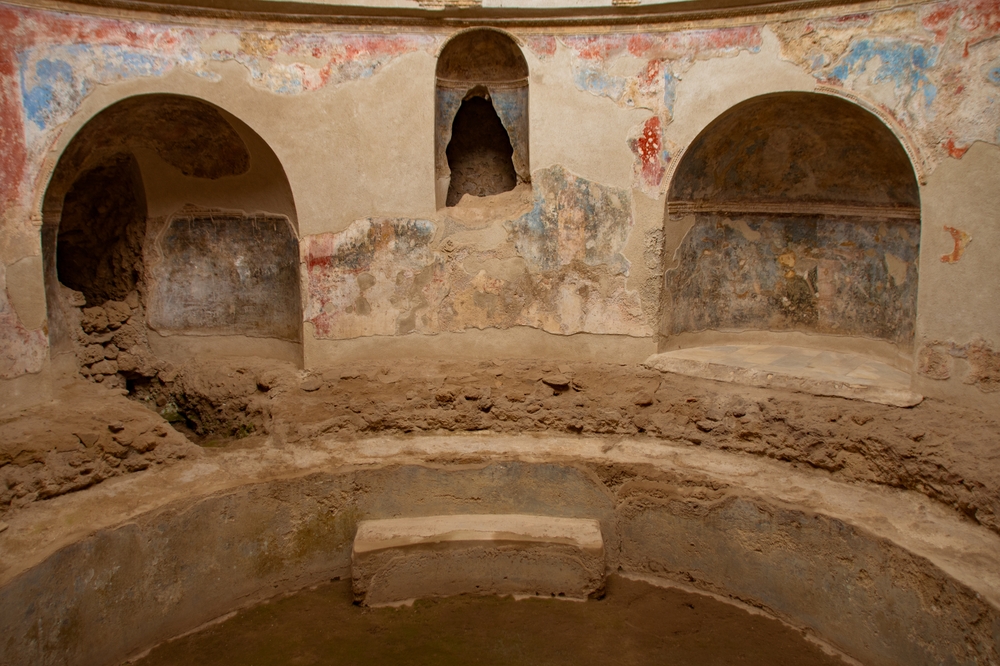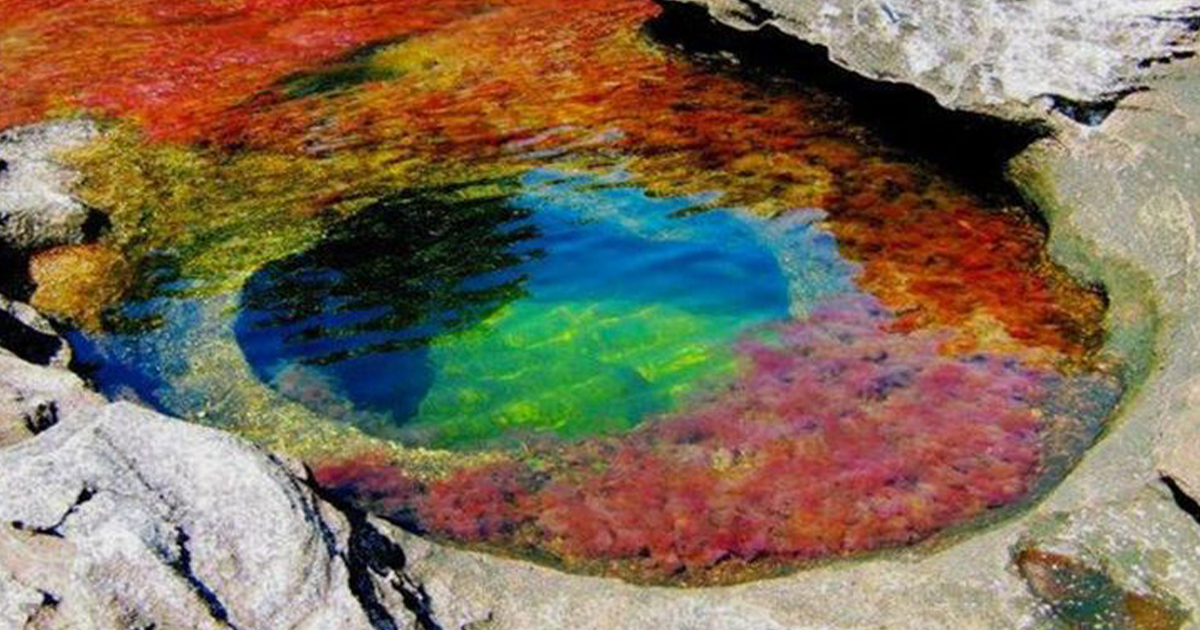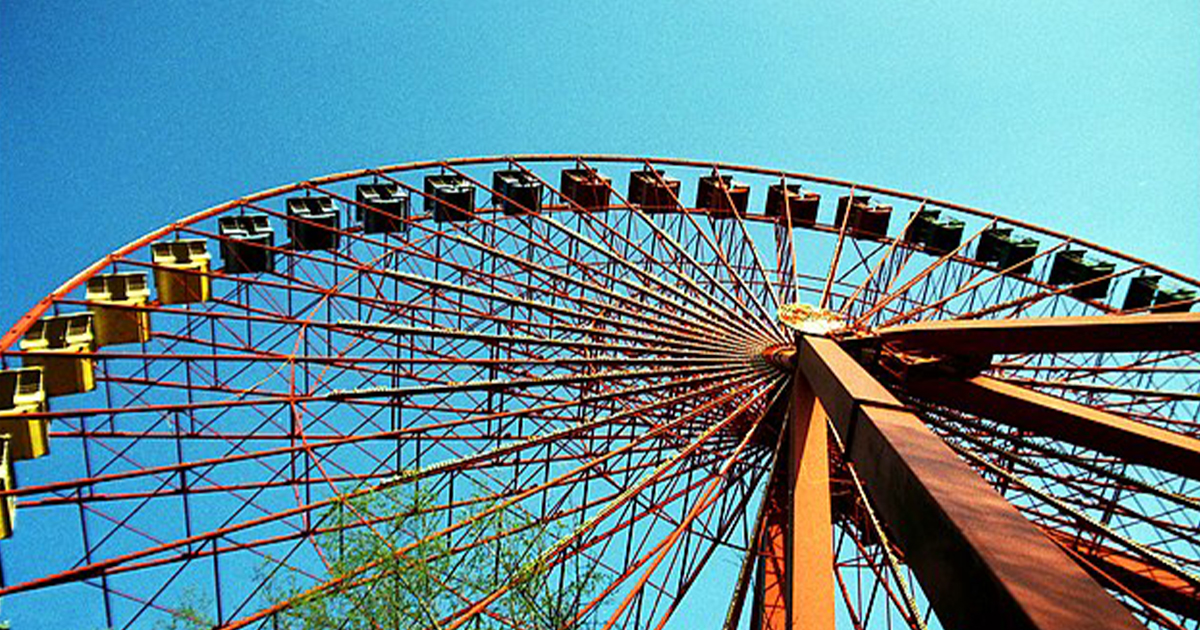Life In A Buried City, What Pompeii Reveals
The eruption of Mount Vesuvius and the resulting tragedy of Pompeii is one of the most famous eruptions in the world. It’s hard to believe that it happened 2,000 years ago. Thanks to that eruption, we now have a clearer picture of what life was like in Pompeii.
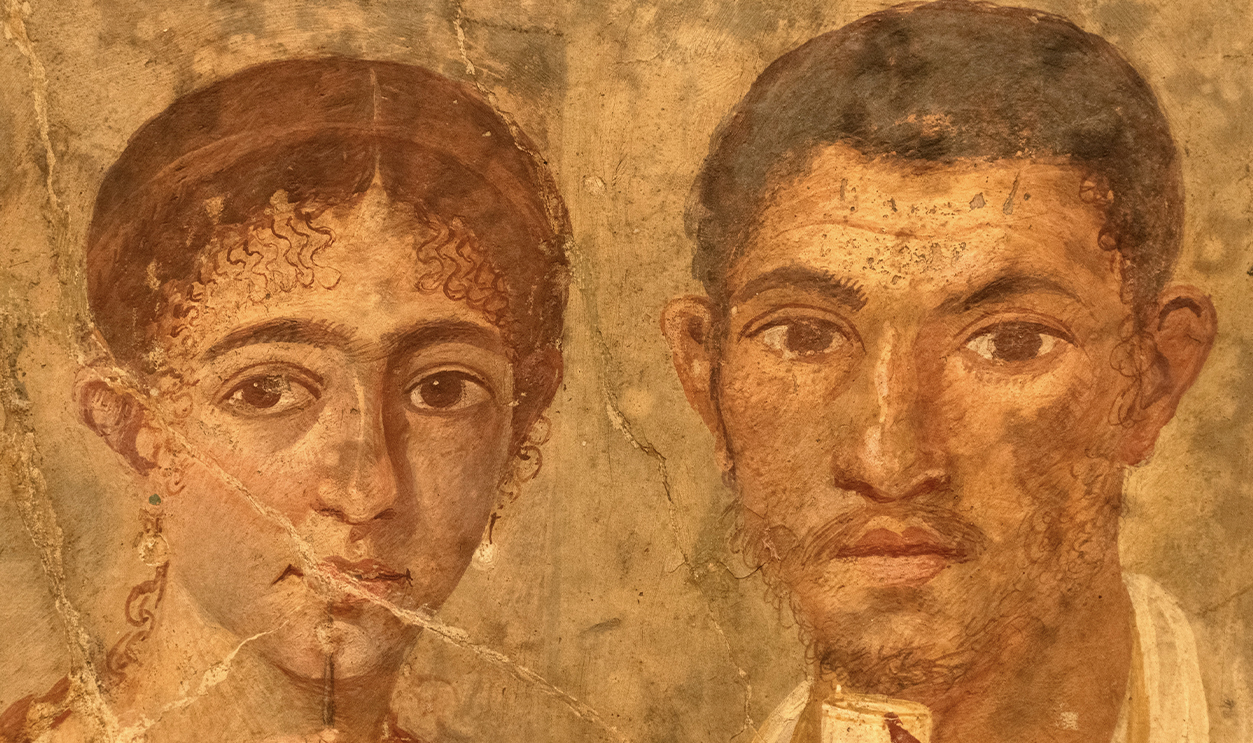
The People Of Pompeii
Pompeii is located in southern Italy, about 14 miles southeast of Naples. It was built on fertile lava terraces at the bottom of Mount Vesuvius. The settlers had no idea what made the land so fertile would also spell their doom.
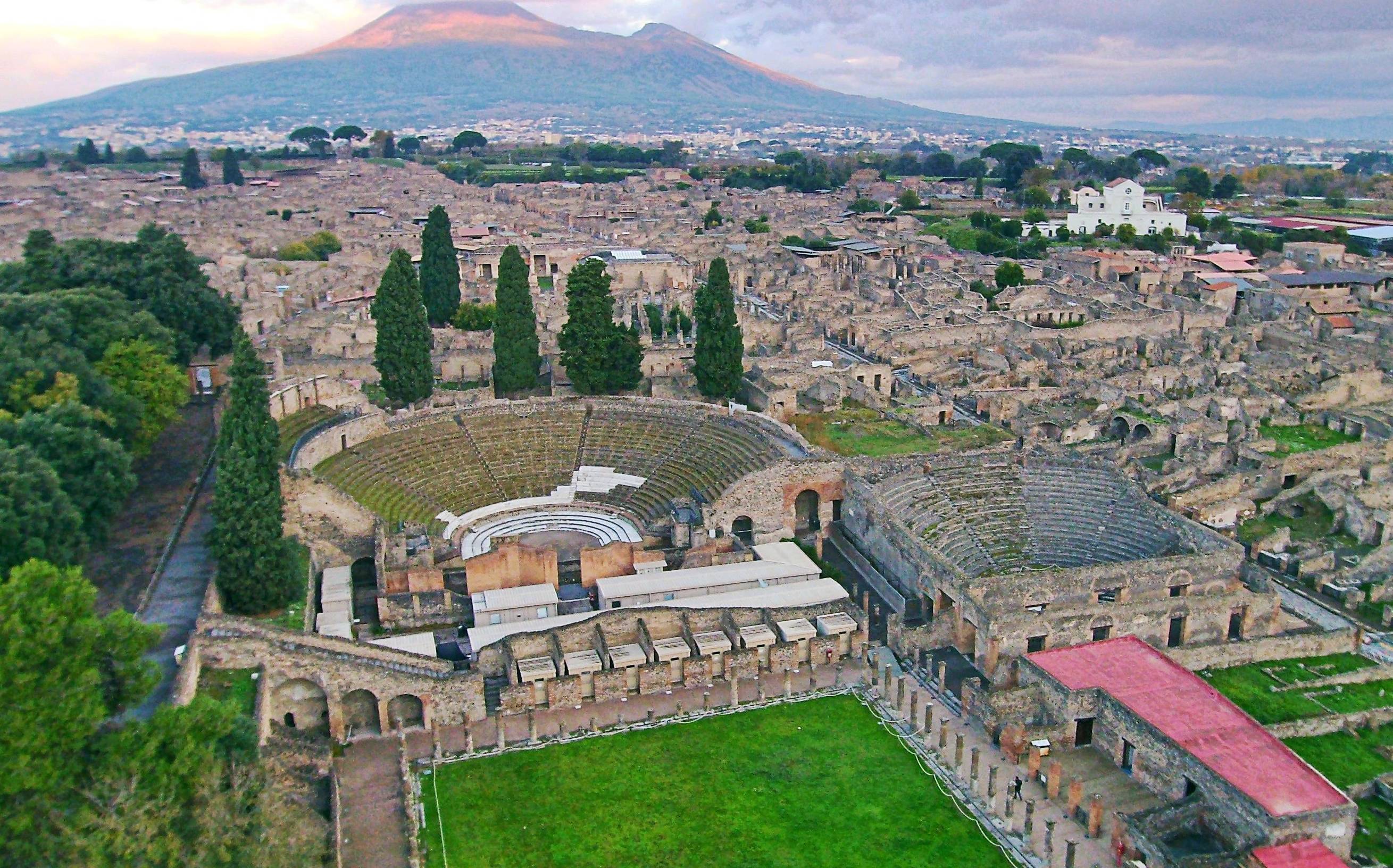 ElfQrin, CC BY-SA 4.0, Wikimedia Commons
ElfQrin, CC BY-SA 4.0, Wikimedia Commons
The People Of Pompeii
It was first inhabited by a group of prehistoric people called the Oscans, somewhere around the 8th century BCE. They was just the first of many people who would settle at the base of this far-from-harmless volcano.
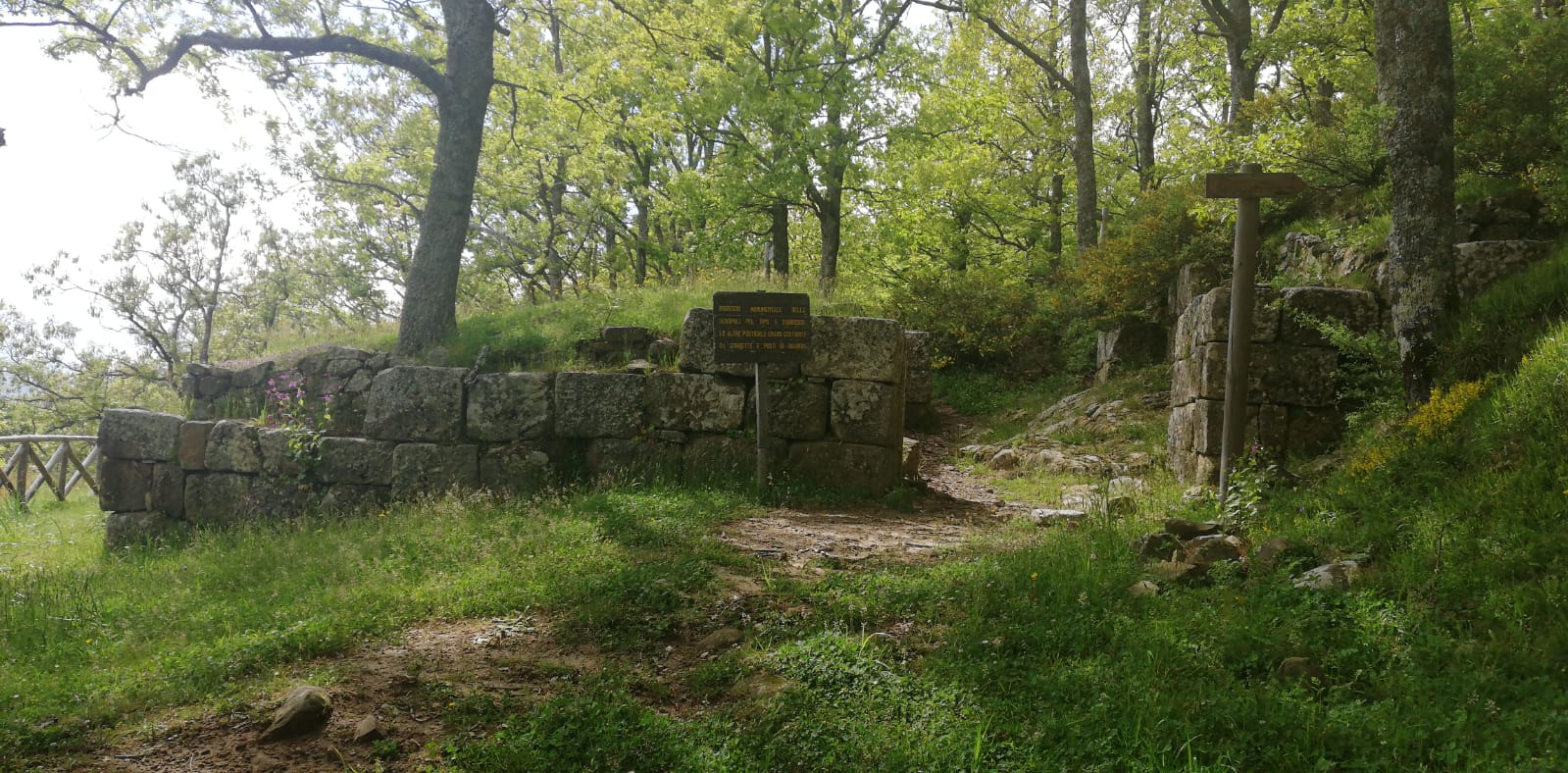 Mikyx1994, CC BY-SA 4.0, Wikimedia Commons
Mikyx1994, CC BY-SA 4.0, Wikimedia Commons
The People Of Pompeii
Due to its location, Pompeii would be inhabited by many groups and cultures. This ensured that the city was a melting pot. It was inhabited by a group called Samnites in the 5th Century BCE—which attracted the attention of the Romans.
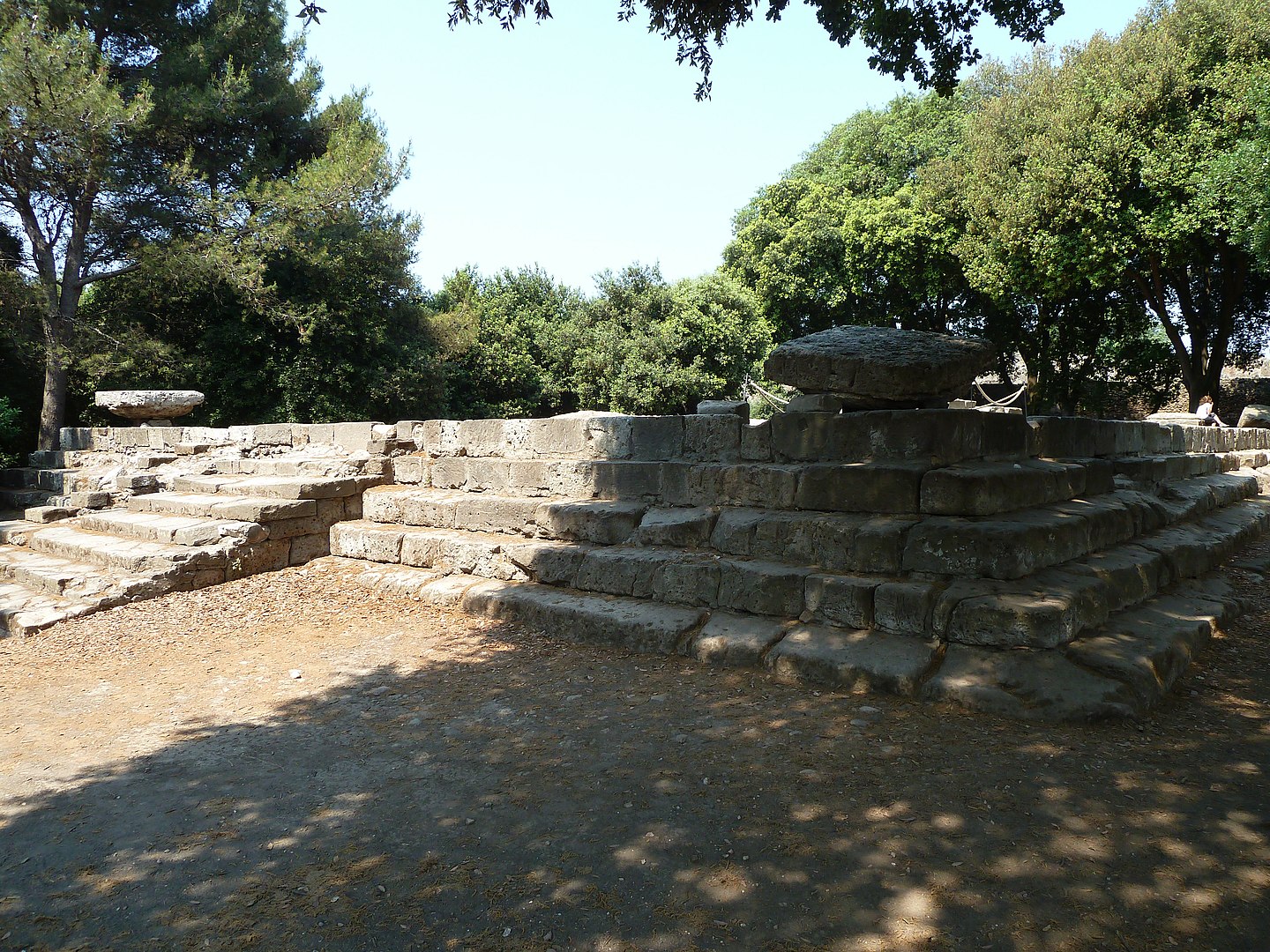 Dave & Margie Hill / Kleerup, CC BY-SA 2.0, Wikimedia Commons
Dave & Margie Hill / Kleerup, CC BY-SA 2.0, Wikimedia Commons
The People Of Pompeii
Once the Romans had Pompeii on their radar, this set off a period of fighting for control over the location. It took the Romans many attempts, but finally, by 80 BCE, Pompeii became part of the Roman Empire.
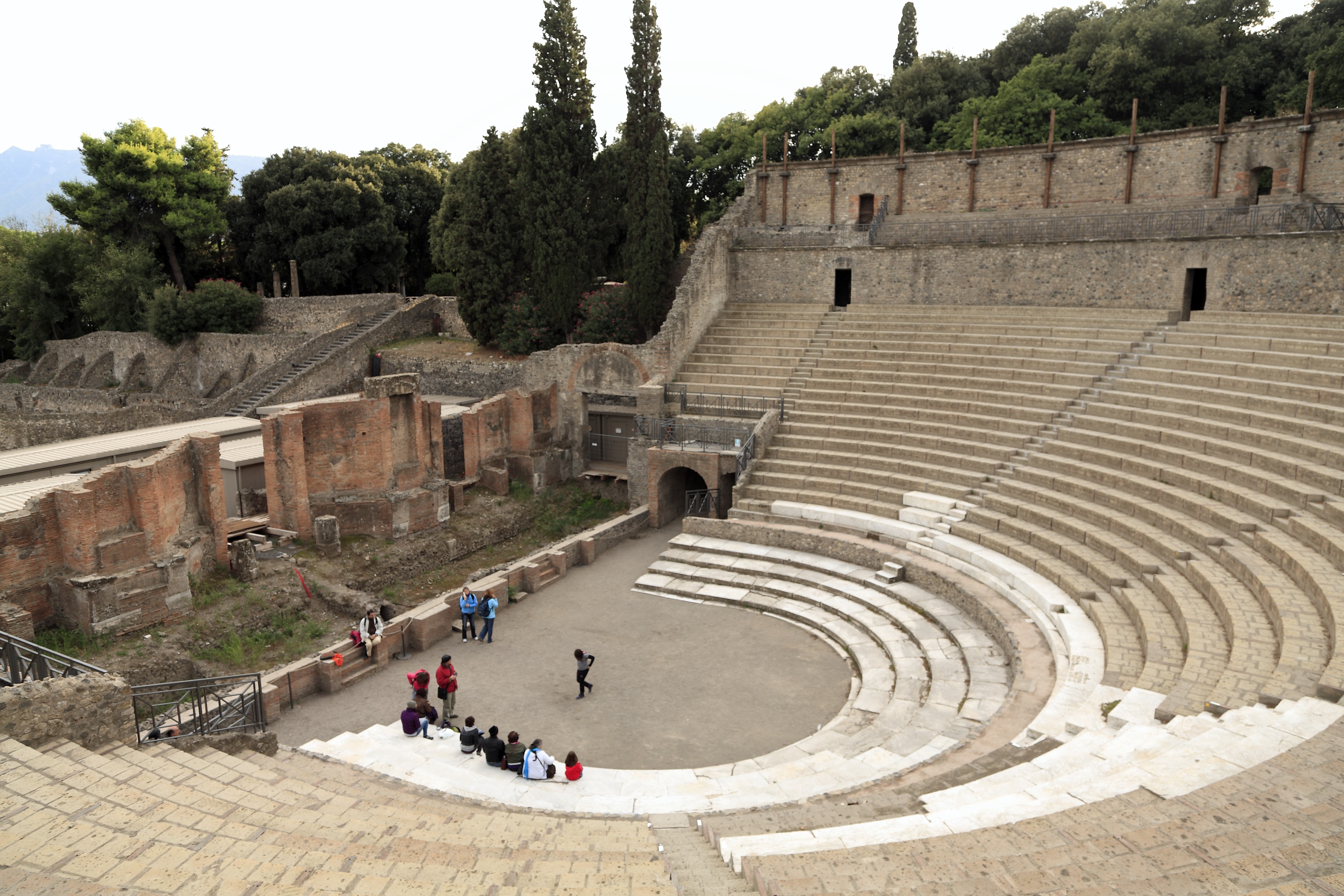 Falk2, CC BY-SA 4.0, Wikimedia Commons
Falk2, CC BY-SA 4.0, Wikimedia Commons
Pompeii’s High Standard Of Living
Pompeii was a prime location before it was buried under ash. The location was situated on the coast of the Italian peninsula, which made it an important stop on maritime trade routes. Though it ran deeper than that.
Pompeii’s High Standard Of Living
The very volcano that would be their demise also created rich fertile soil. This meant that Pompeii had thriving agriculture. These two things together meant that it flourished economically, and its population swelled.
Pompeii’s High Standard Of Living
Due to this prosperity, the middle class of Pompeii, made up of merchants and businesspeople, got to enjoy a higher standard of living than those of neighboring settlements. They displayed this prosperity in their architecture.
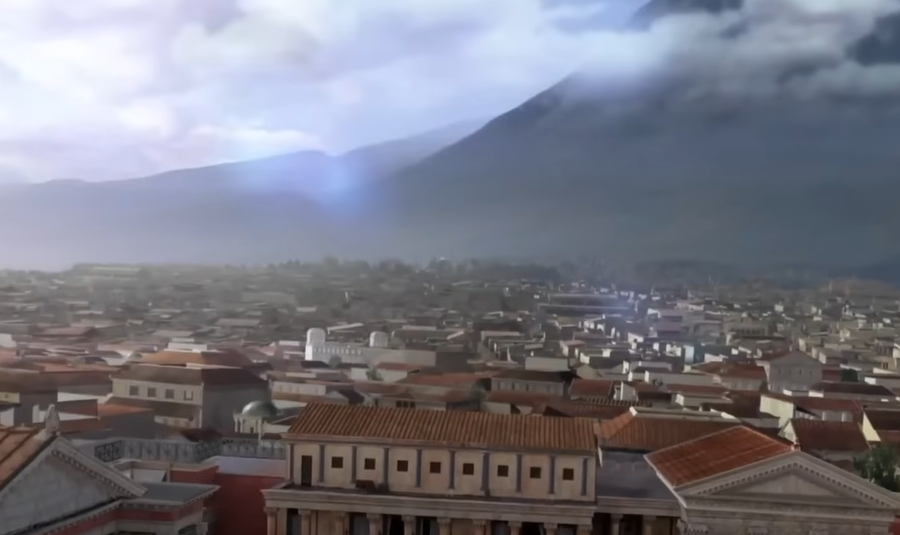 Janus Media, Pompei, ieri, oggi, domani (2007)
Janus Media, Pompei, ieri, oggi, domani (2007)
The Beauty Of Pompeii
Pompeii was a prosperous city in the Roman Empire. As such, its architecture reflected that. The merchants of Pompeii displayed their wealth and prosperity by creating an opulent city filled with grand avenues, a forum, an amphitheater, and numerous temples.
The Walled City
Pompeii was surrounded by walls that had a two-mile circumference. Within these walls was a sprawling city that was filled with a variety of houses, villas, shops, and public spaces. The people of Pompeii lived a vibrant and cultured life.
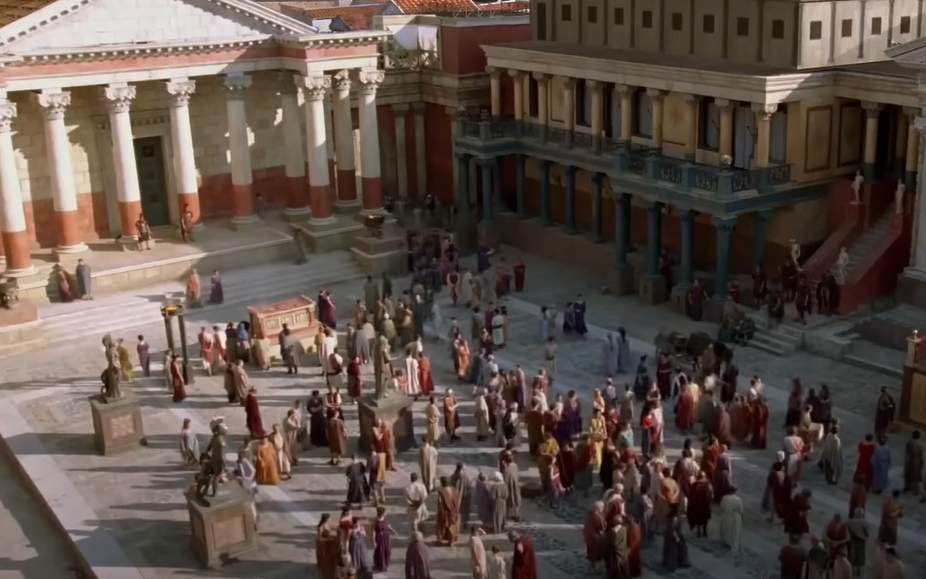 Janus Media, Pompei, ieri, oggi, domani (2007)
Janus Media, Pompei, ieri, oggi, domani (2007)
Pompeii’s Art
Art was a huge trade in Pompeii. Painters and decorators could make a good business through decorating the dark interiors of Pompeii’s homes. Most ‘decorators’ consisted of a team of people.
Pompeii’s Art
An excavation of a home has revealed insight into how Pompeii’s artists worked houses. There would be assistants who did the general work, putting up plaster and doing broad washes of colors. Meanwhile, masters would design sketches and paint the more artistic aspects.
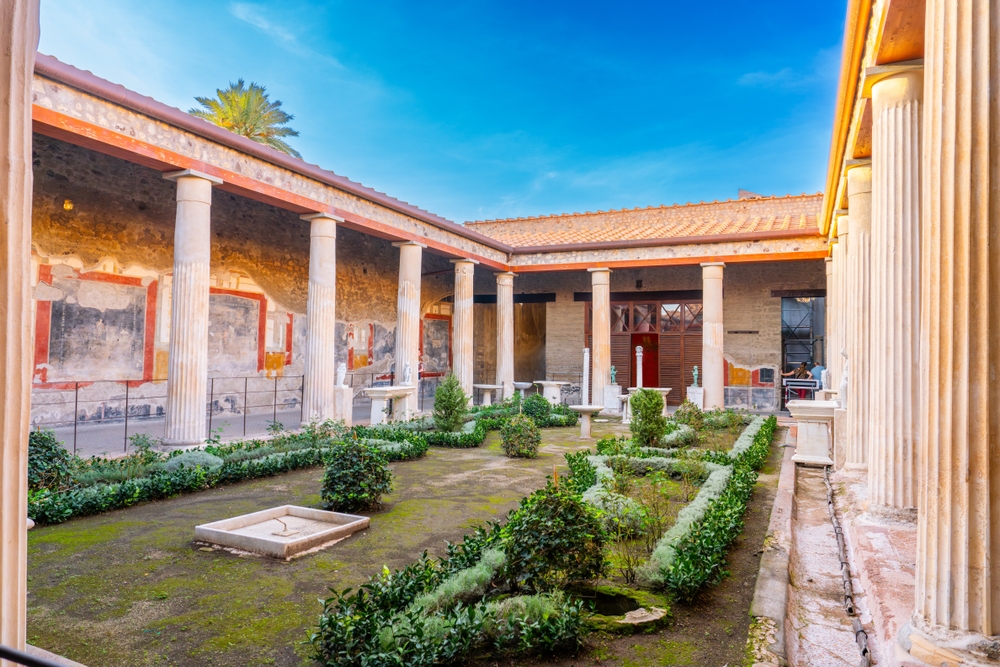 Ivo Antonie de Rooij, Shutterstock
Ivo Antonie de Rooij, Shutterstock
Banking In Pompeii
Banking is not a modern investment, though the Romans did not have cheques or credit cards. Records from Pompeii give an insight into how a bank worked in Pompeii. What they found might surprise you.
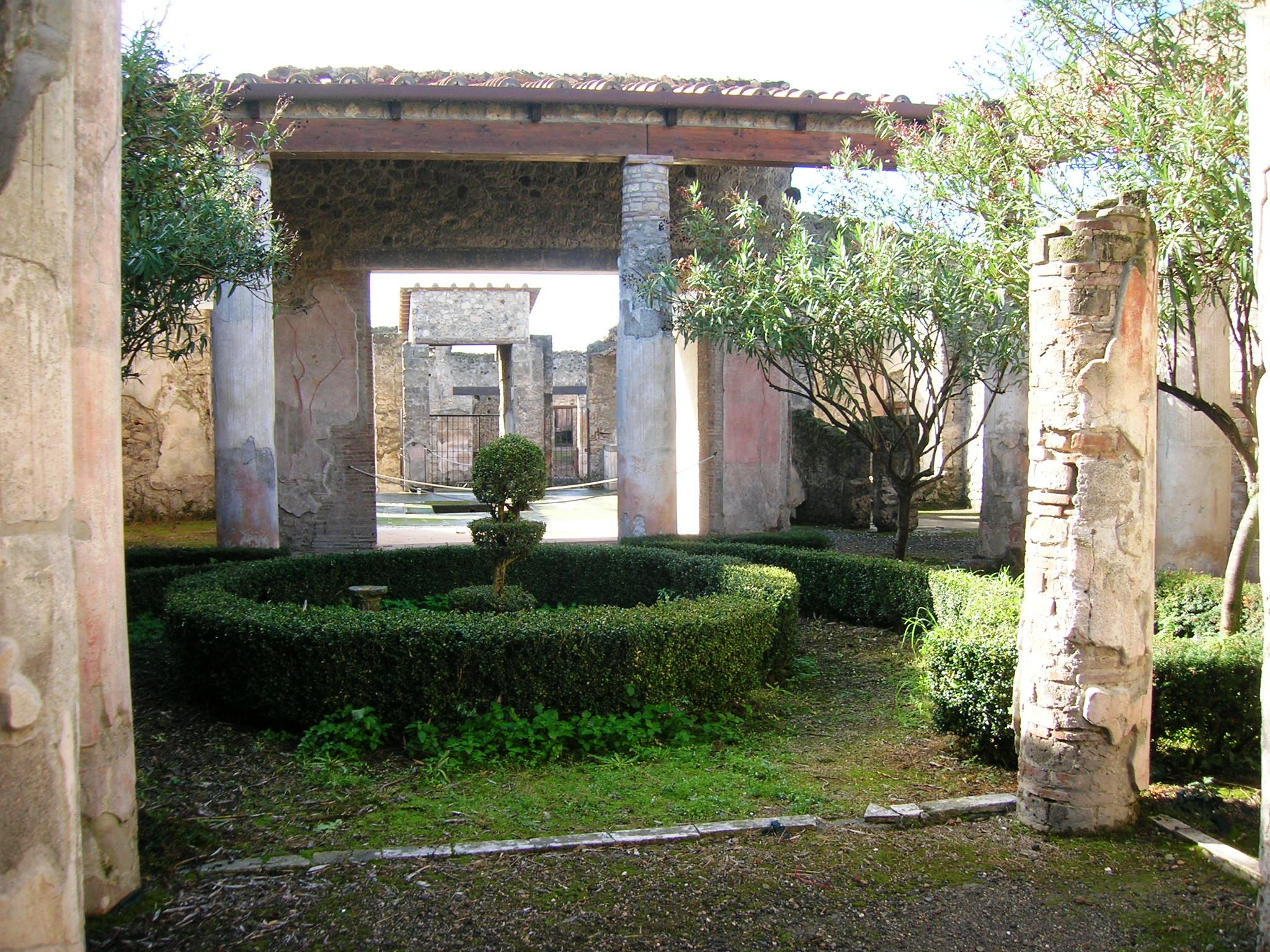 Mentnafunangann, CC BY-SA 3.0, Wikimedia Commons
Mentnafunangann, CC BY-SA 3.0, Wikimedia Commons
Banking In Pompeii
Using the term banking, as we understand it, maybe a bit of a misnomer. Evidence suggests that Pompeii's banker was more of an auctioneer. He’d charge the seller a commission, and then also lend money to the buyer—at a healthy interest rate of course.
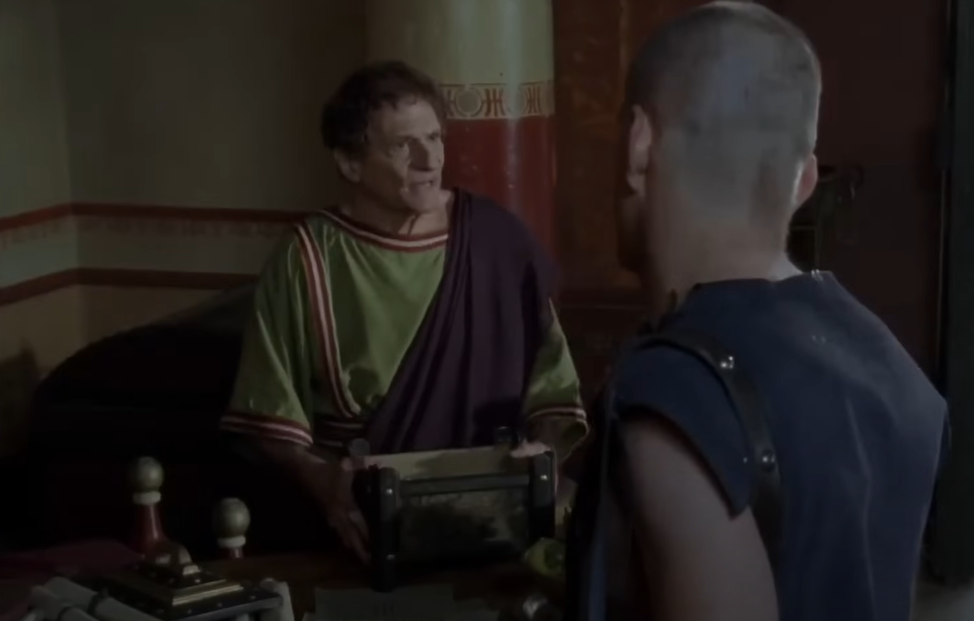 Janus Media, Pompei, ieri, oggi, domani (2007)
Janus Media, Pompei, ieri, oggi, domani (2007)
Take-Out In Pompeii
The people in Pompeii had frequent access to what we’d call cafés and bars. At the most recent estimate, there were about 200 in the town. That worked out to roughly one café or bar for every 60 residents.
Take-Out In Pompeii
Unlike today, where heading out on the town is a luxury of the rich, it seemed that eating out was a common activity of the poor. Most of these locations consisted of a counter that ran along the street, selling cheap takeaway food and drink.
The Food Of Pompeii
The staples of Pompeii, for the average person, were quite simple foods. They lived on bread, olives, beans, eggs, cheese, fruits and vegs, and fish. Meat did not seem to be as frequent, though when it was eaten, it would be pork. The rich had a different story.
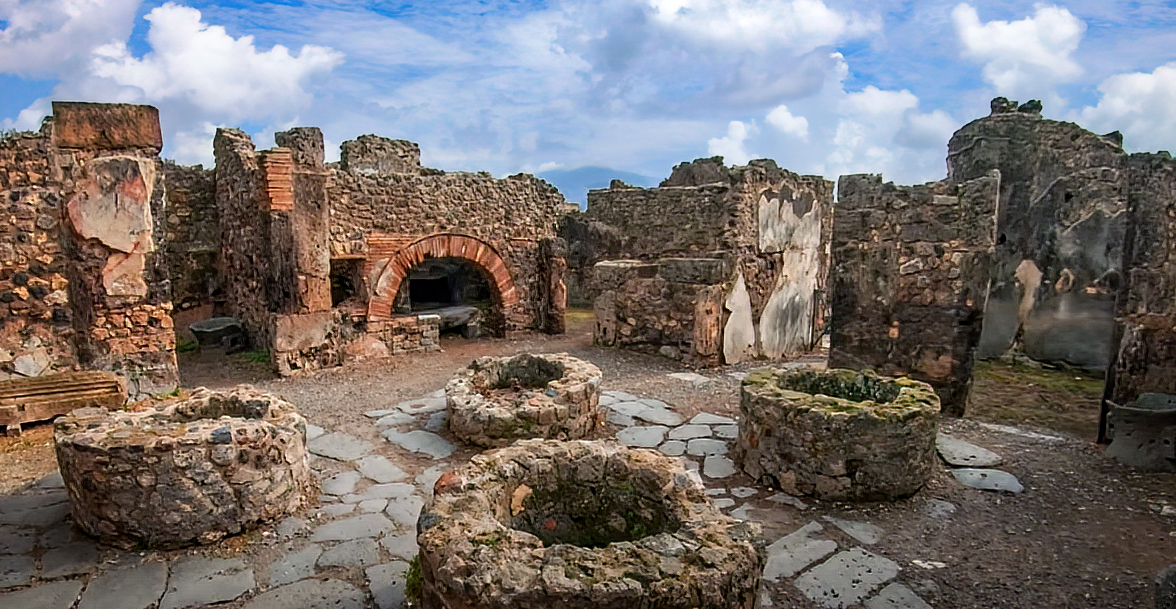 Mary Harrsch, CC BY-SA 2.0, Wikimedia Commons
Mary Harrsch, CC BY-SA 2.0, Wikimedia Commons
The Food Of Pompei
There are some rumors that the people of Pompeii ate dormice; this came about due to the discovery of strange pottery containers that ancient writers identified as dormouse cages. The rumors were true, though only occasion for the rich.
 H. Osadnik, CC BY-SA 3.0, Wikimedia Commons
H. Osadnik, CC BY-SA 3.0, Wikimedia Commons
The Food Of Pompeii
Garum was a less than appetizing concoction of rotten fish. While this does not sound like a delicacy we wish to bring back, it was an essential part of Roman cooking and was as popular in Pompeii as it was elsewhere.
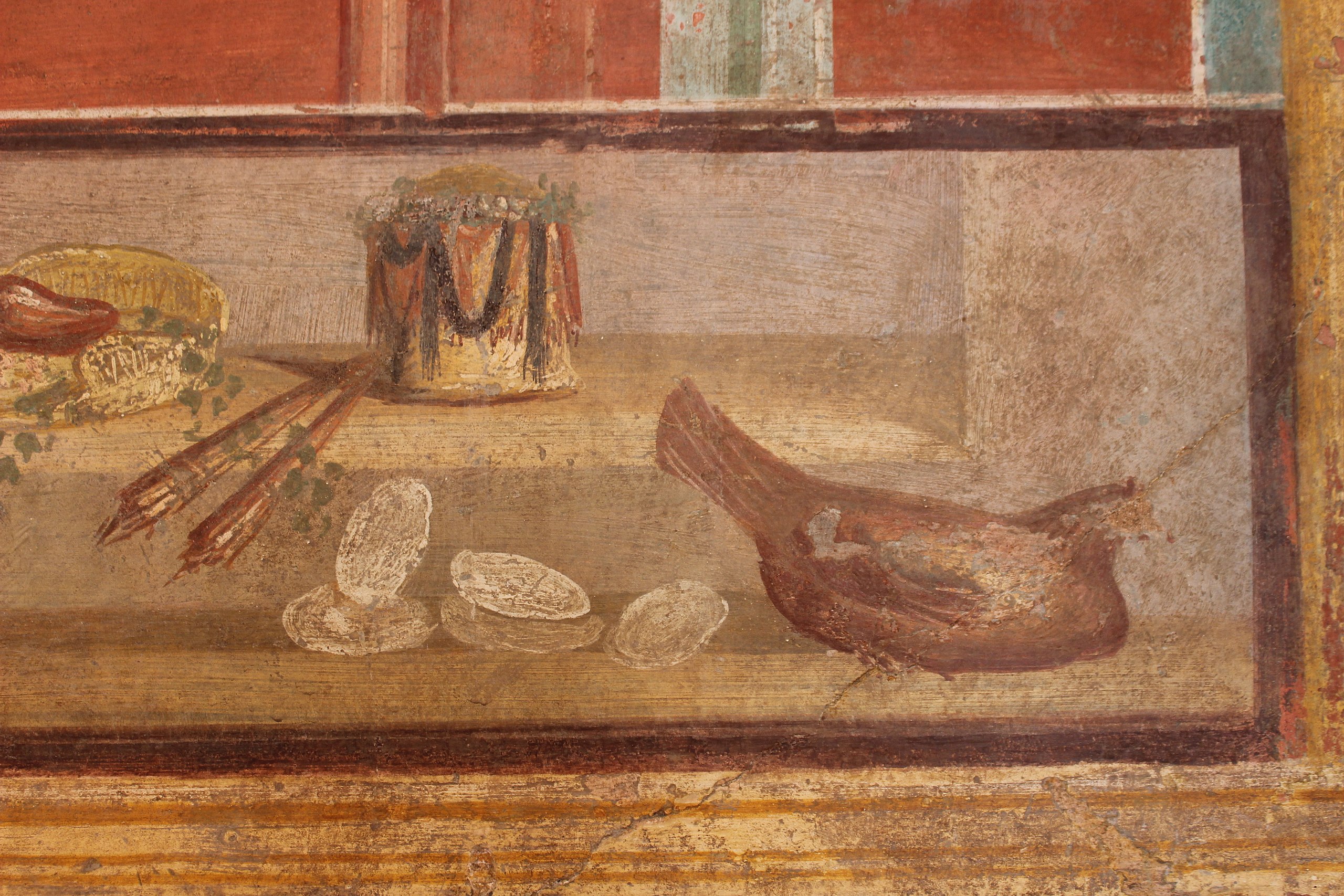 Miguel Hermoso Cuesta, CC BY-SA 4.0, Wikimedia Commons
Miguel Hermoso Cuesta, CC BY-SA 4.0, Wikimedia Commons
The Pompeii Kitchen
The biggest reason that takeout was for the poor was because most homes in Pompeii did not have a kitchen. Even for those that did (the rich), the kitchen was still a small, dark place that was equipped with a hearth and cauldrons.
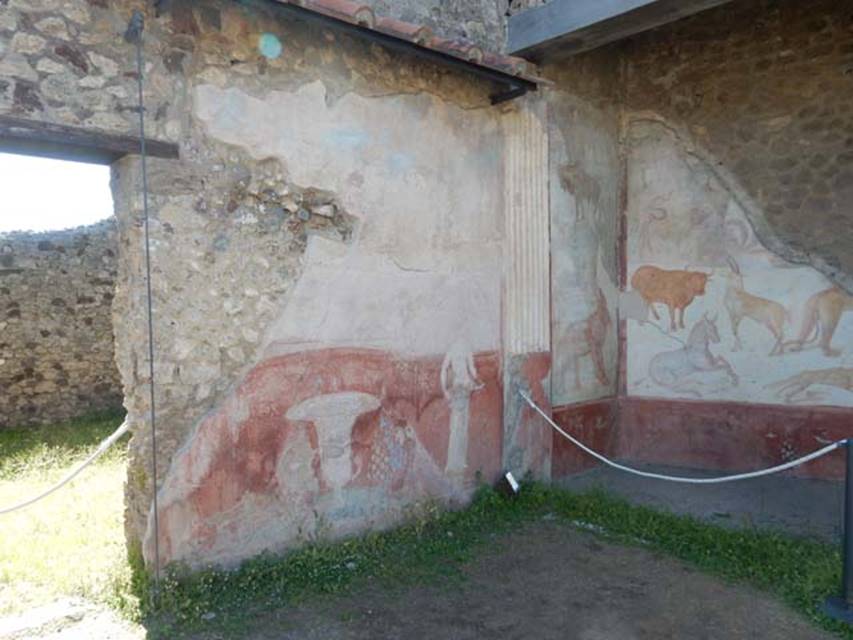 Ancient Roman frescos of Pompeii, Wikimedia Commons
Ancient Roman frescos of Pompeii, Wikimedia Commons
The Pompeii Kitchen
Due to this lack of space, large meals and banquets were unlikely. However, if they did happen, the preparation would probably spread far beyond the kitchen, with those cooking and preparing food likely doing so in other spaces.
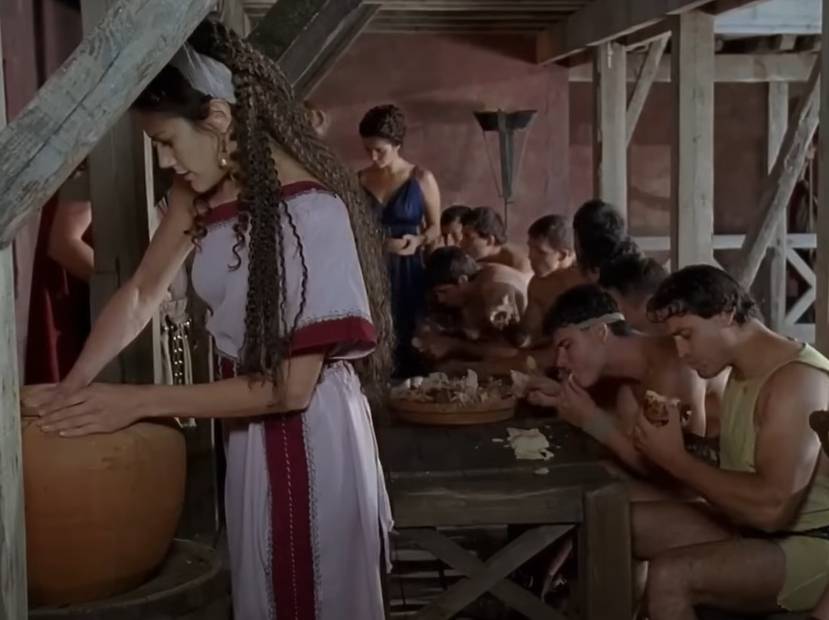 Janus Media, Pompei, ieri, oggi, domani (2007)
Janus Media, Pompei, ieri, oggi, domani (2007)
The Pompeii Kitchen
The one thing that was common in the Pompeii kitchen was, well, the lavatory. Modern hygiene balks at such a thing. However, it likely made for a convenient means to dispose of all waste, bodily or otherwise.
The Pompeii Kitchen
There was, on occasion, running water in Pompeii. A few of the rich homes may have used this in their lavatories, though the truth is that if they were rich enough to have running water, they were more interested in using it for fountain displays.
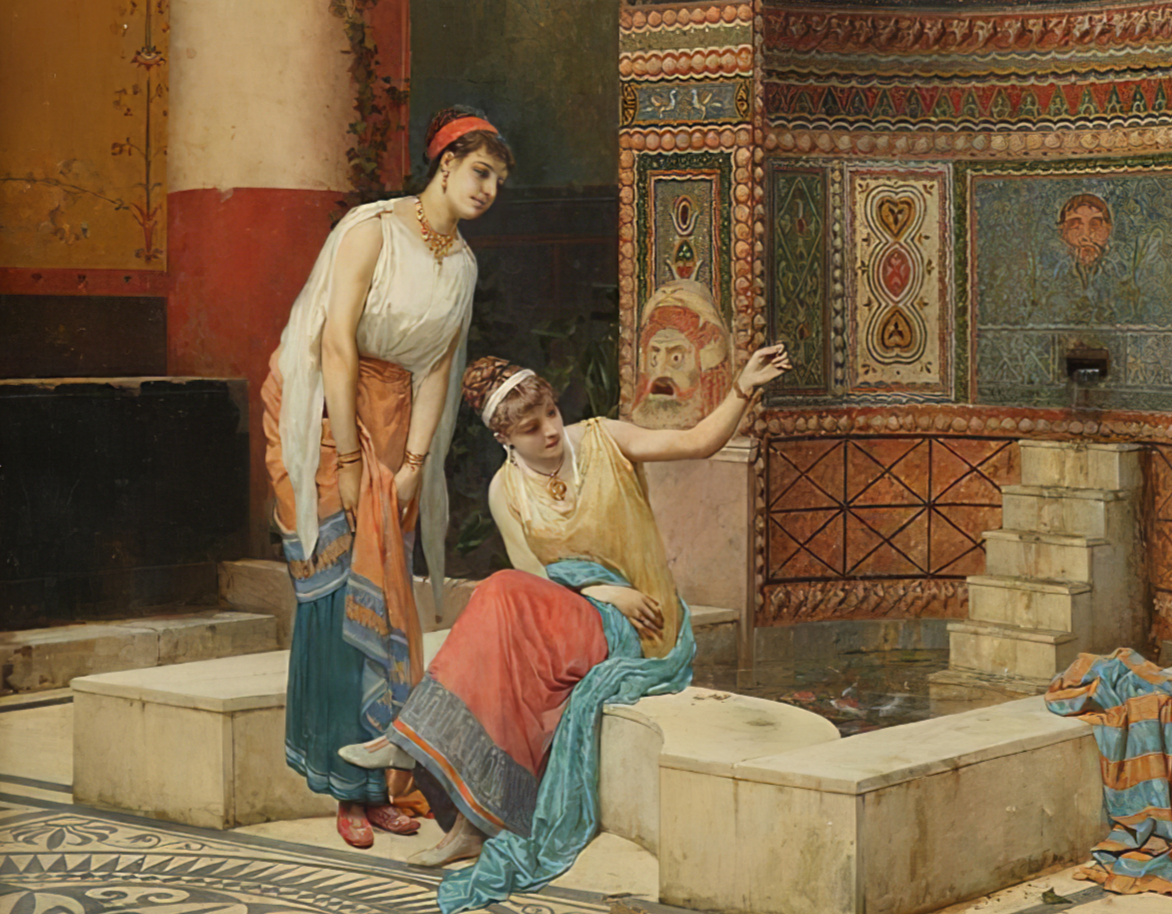 Luigi Bazzani, Wikimedia Commons
Luigi Bazzani, Wikimedia Commons
Pompeii Streets
Archaeologists have found a strange thing in Pompeii that is not present in the nearby town of Herculaneum. The streets of Pompeii are filled with stepping stones. The answer is simple—though perhaps unsavory.
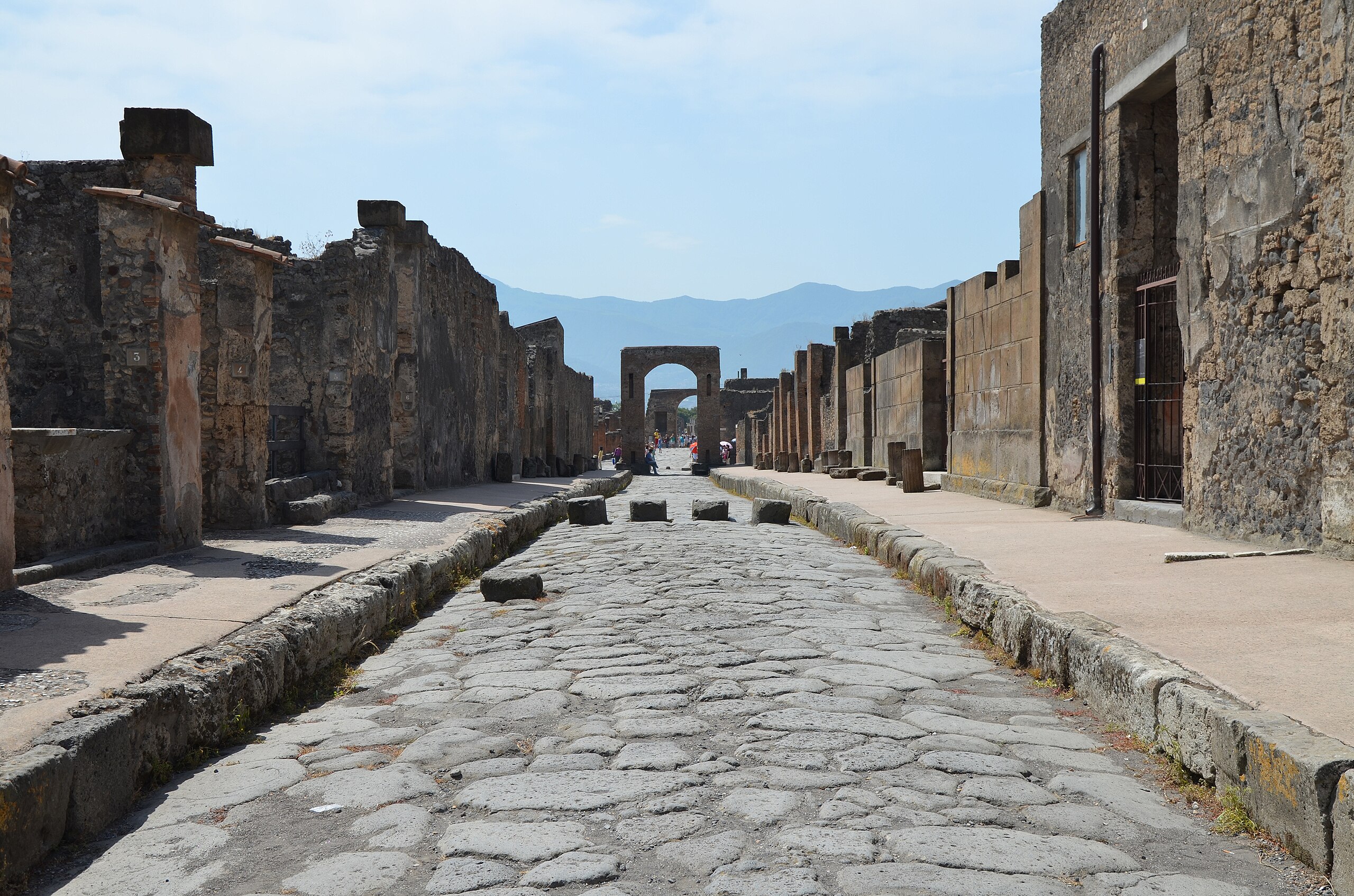 Carole Raddato, CC BY-SA 2.0, Wikimedia Commons
Carole Raddato, CC BY-SA 2.0, Wikimedia Commons
Pompeii Streets
Nearby Herculaneum had developed underground drainage. Pompeii had not. There weren’t many, if any, drains to take both rainwater and sewage out of the city. During a rainstorm, the streets likely became unpleasant rivers, making the stepping stones a necessity for travel.
Where Did They Get Educated?
The excavations of Pompeii have yet to dig up any buildings that appear to have been used as school rooms. Yet education was a part of Roman culture. A series of paintings found in the Pompeiian forum suggest that teachers often took their class (of all boys) to a shady outdoor spot to learn.
Faith Of Pompeii
As they were a Roman city by this point, the prevailing faith of Pompeii is the one we have come to expect from Ancient Rome, featuring sacrifices and festivals to the Roman pantheon of gods and goddesses. However, they were not the only faiths visible in the city.
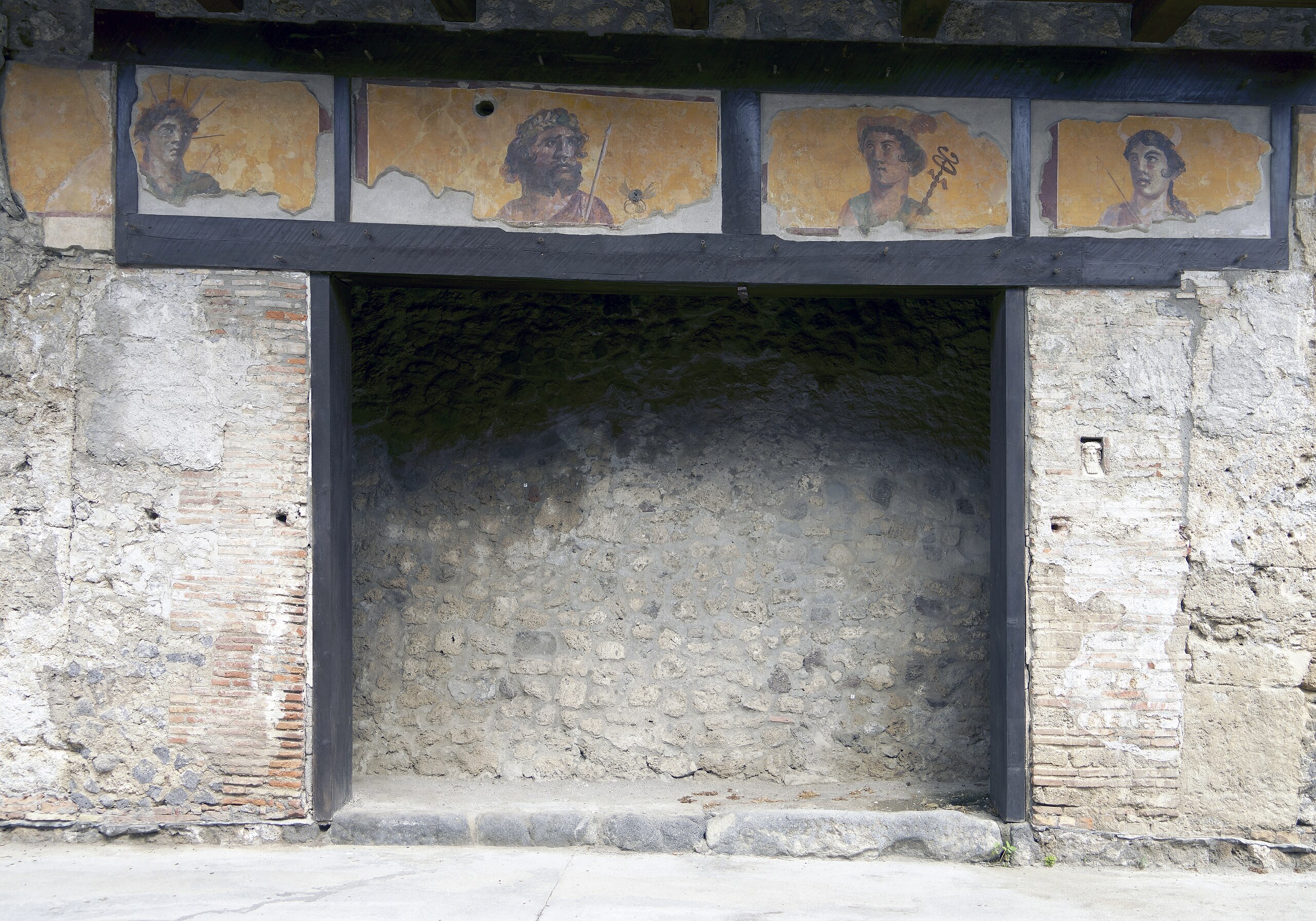 Commonists, CC BY-SA 4.0, Wikimedia Commons
Commonists, CC BY-SA 4.0, Wikimedia Commons
Faith Of Pompeii
Evidence has found a temple to the Egyptian goddess Isis, and there are signs that Jewish people and worshipers of the Great Mother Cybele lived in Pompeii. Researchers have yet to find any clear evidence of Christianity, but they have found a statue of the Indian goddess Lakshmi.
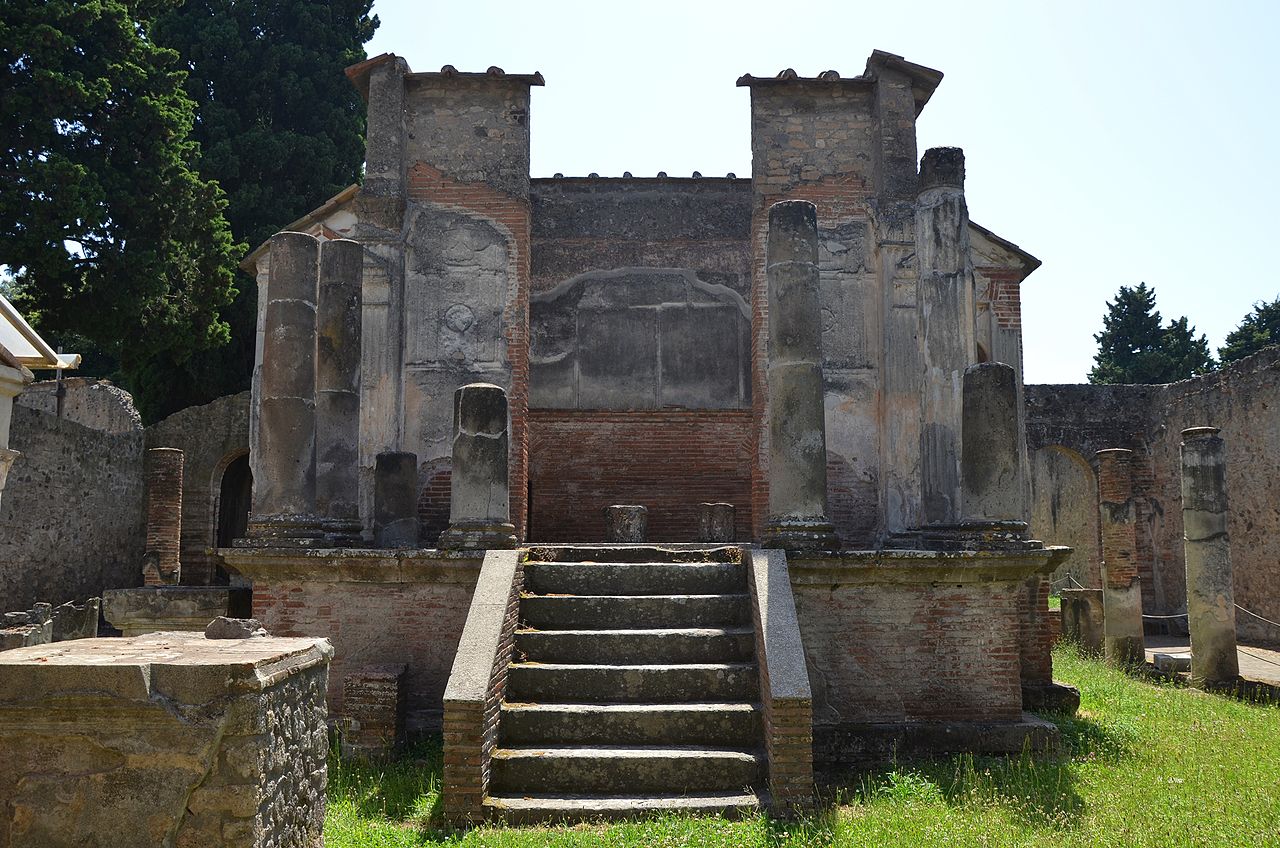 Carole Raddato, CC BY-SA 2.0, Wikimedia Commons
Carole Raddato, CC BY-SA 2.0, Wikimedia Commons
The Public Bathhouse
The public bathhouse was an essential part of Roman society. They are frequently referenced as a meeting ground for any Roman community and Pompeii was no different. They had at least six public bathing complexes.
The Public Bathhouse
Only the very rich had private bathing facilities. For the majority of people in Pompeii, it would have been common to exercise, sweat, and then take a dip in one of the offered communal establishments. It was about as clean as you imagine.
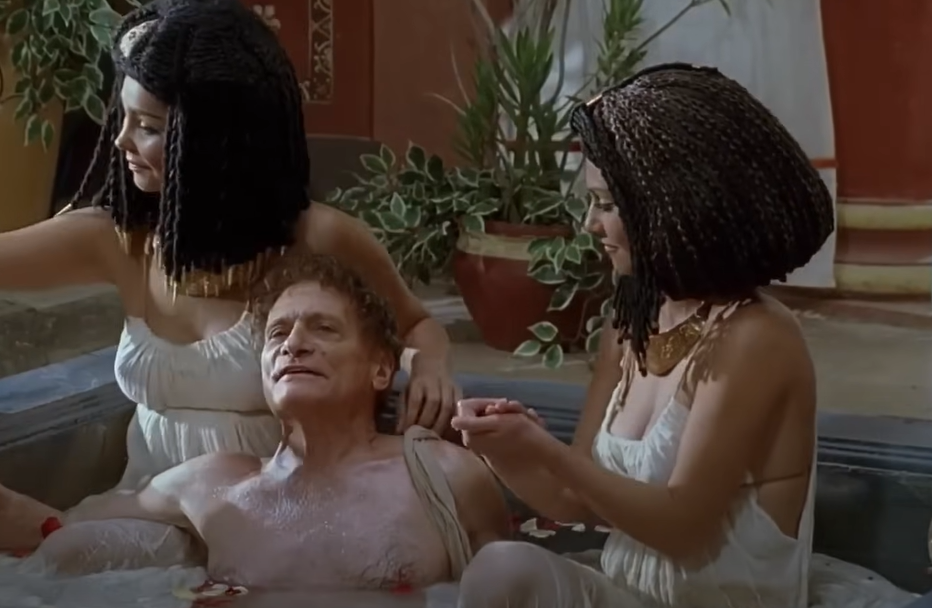 Janus Media, Pompei, ieri, oggi, domani (2007)
Janus Media, Pompei, ieri, oggi, domani (2007)
The Public Bathhouse
Unlike public pools today that are not designed to clean off the body and have rigorous health codes, the bathhouse was a hotbed for germs and infections. Ancient doctors would warn against going to the bathhouse with an open wound, lest it led to gangrene.
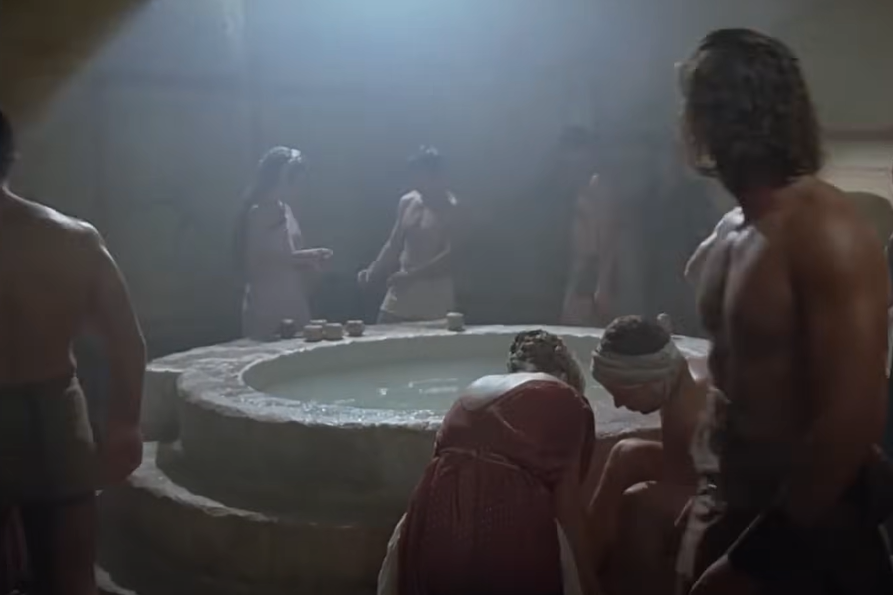 Janus Media, Pompei, ieri, oggi, domani (2007)
Janus Media, Pompei, ieri, oggi, domani (2007)
Illness In Pompeii
With conditions like this and limited modern medicines, illness was rampant in Pompeii. It struck the young particularly hard. Over half of Pompeii’s children passed before the age of 10. There was some good news, though.
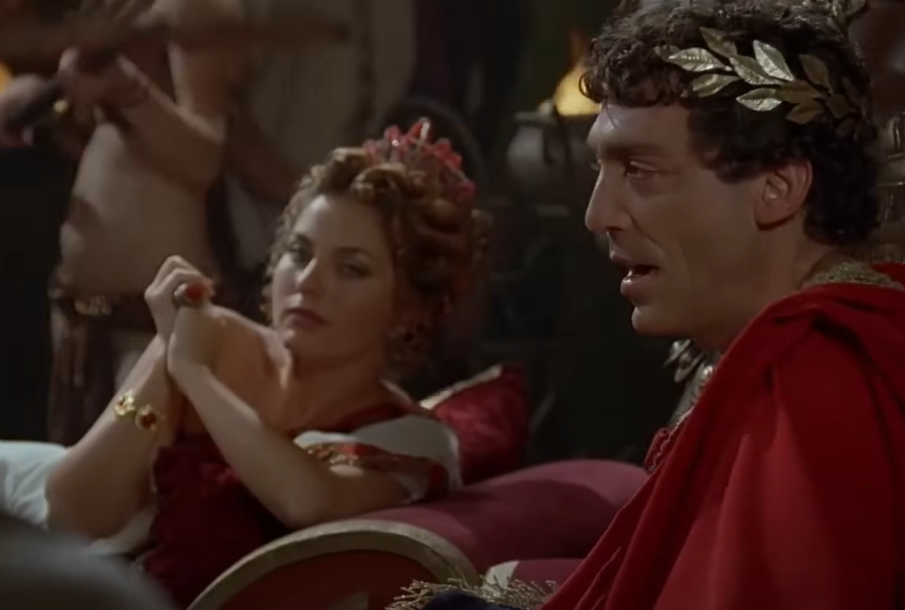 Janus Media, Pompei, ieri, oggi, domani (2007)
Janus Media, Pompei, ieri, oggi, domani (2007)
Illness In Pompeii
If you survived passed the age of 10, then the life expectancy in Pompeii was not much shorter than our own. Their doctors were knowledgeable for the times and equipped with many of the same equipment our own modern medicine has.
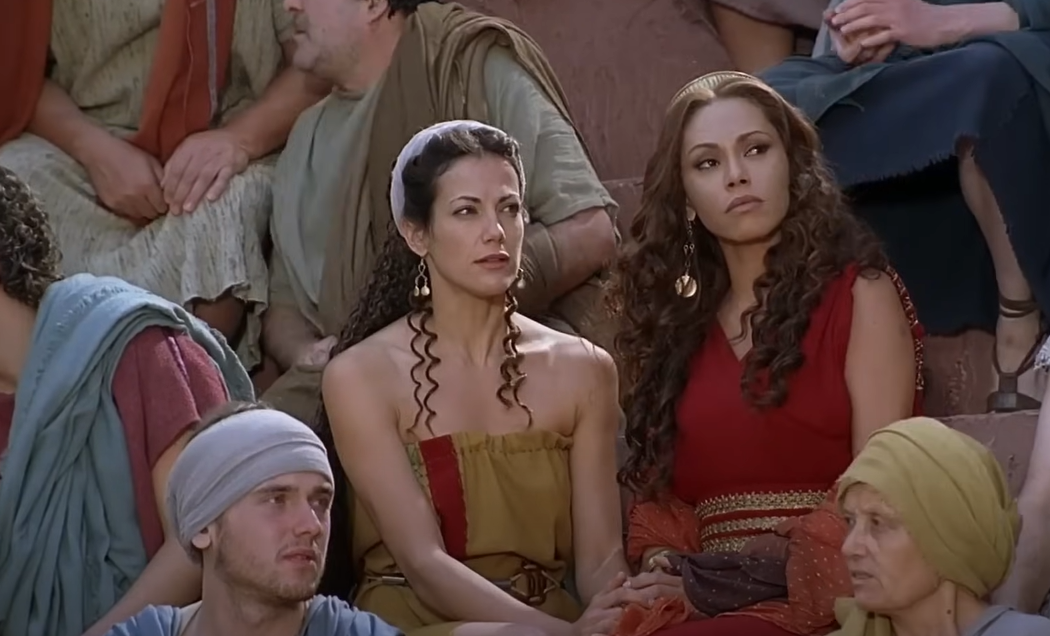 Janus Media, Pompei, ieri, oggi, domani (2007)
Janus Media, Pompei, ieri, oggi, domani (2007)
The Nightlife Of Pompeii
Unlike today, Pompeii did not have the luxury of lighting their evenings with electricity. Oil lamps were used, though it was unlikely to have made much effect on the all-consuming dark that descended in the evening. Still, this didn’t stop the people of Pompeii.
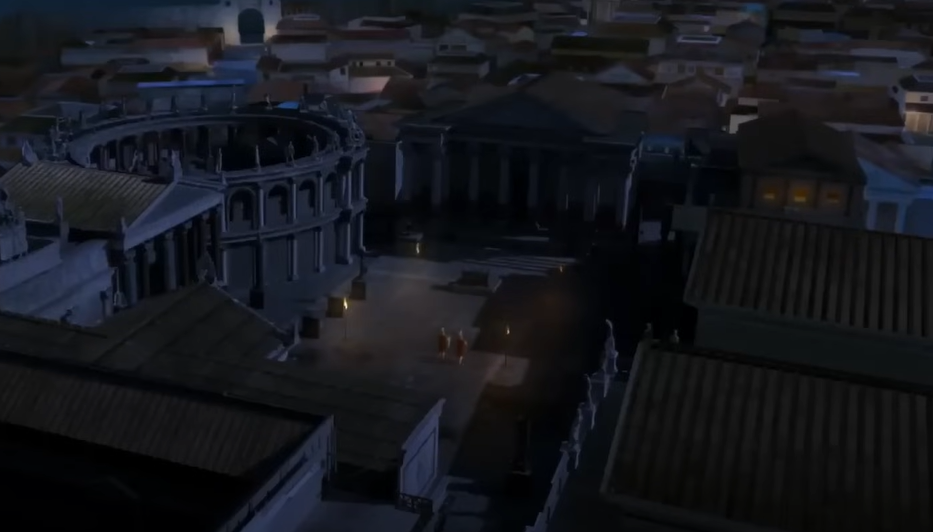 Janus Media, Pompei, ieri, oggi, domani (2007)
Janus Media, Pompei, ieri, oggi, domani (2007)
The Nightlife Of Pompeii
Despite the dark, the bars continued to serve well into the evening. Graffiti from “the late drinkers” on one Pompeii wall indicates that their nightlife was not much different than our own.
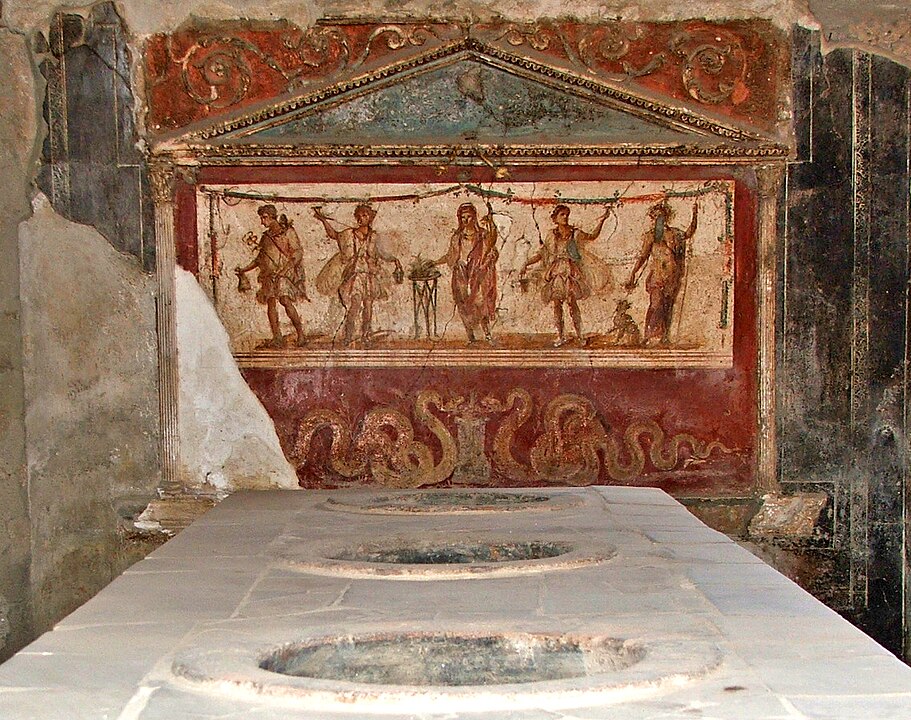 Daniele Florio, CC BY 2.0, Wikimedia Commons
Daniele Florio, CC BY 2.0, Wikimedia Commons
Pompeii Needed Careful Driving
If you have a chance to visit Pompeii, you will notice one thing right away: most of the streets are far too narrow for two-way traffic. If you met someone traveling along these streets in the opposite direction, reversing wasn’t going to happen in a horse-drawn cart. So, what did they do?
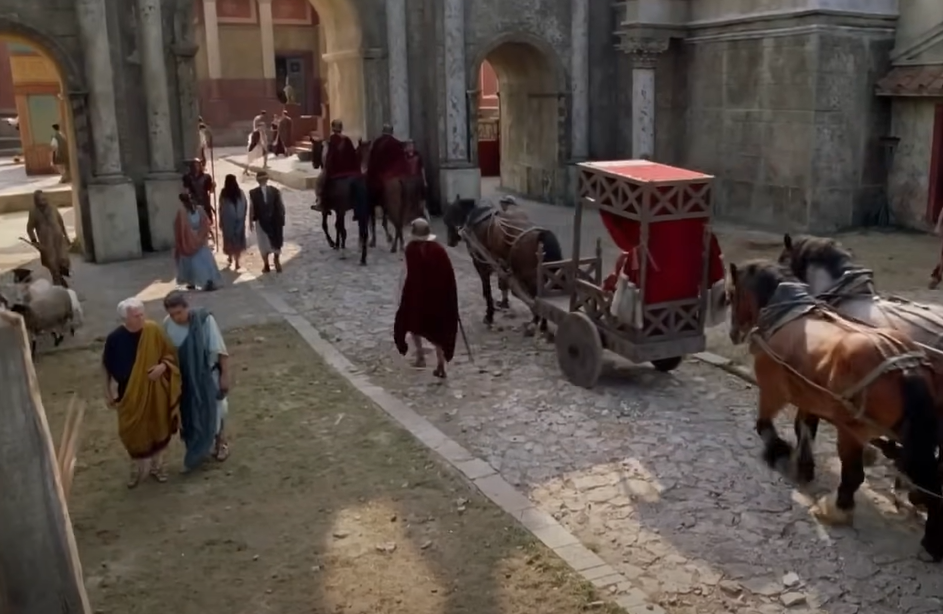 Janus Media, Pompei, ieri, oggi, domani (2007)
Janus Media, Pompei, ieri, oggi, domani (2007)
Pompeii Needed Careful Driving
Well, there were a couple of solutions to try to avoid potential disaster on these narrow streets. One, like your bike, was to simply ring a loud bell. The other was to send a boy ahead to make sure the way was clear.
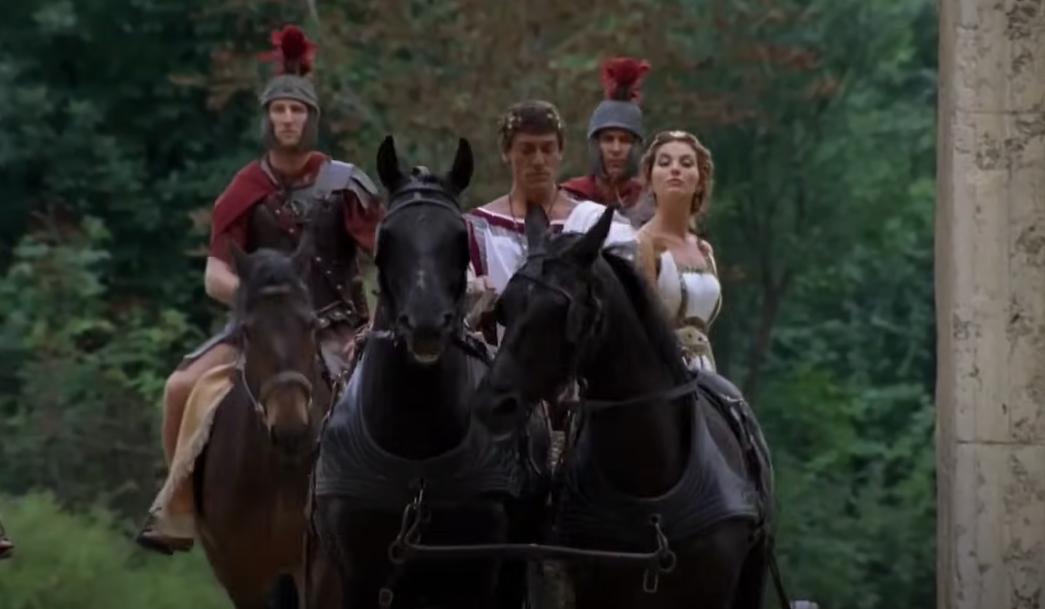 Janus Media, Pompei, ieri, oggi, domani (2007)
Janus Media, Pompei, ieri, oggi, domani (2007)
Pompeiian Wine
The land surrounding Pompeii was well known for vineyards. Considering this region had such fertile soil, this is unsurprising. However, most reports state that Pompeii’s wine was bottom of the barrel. One Roman writer even complained that it’d give you a hangover until midday.
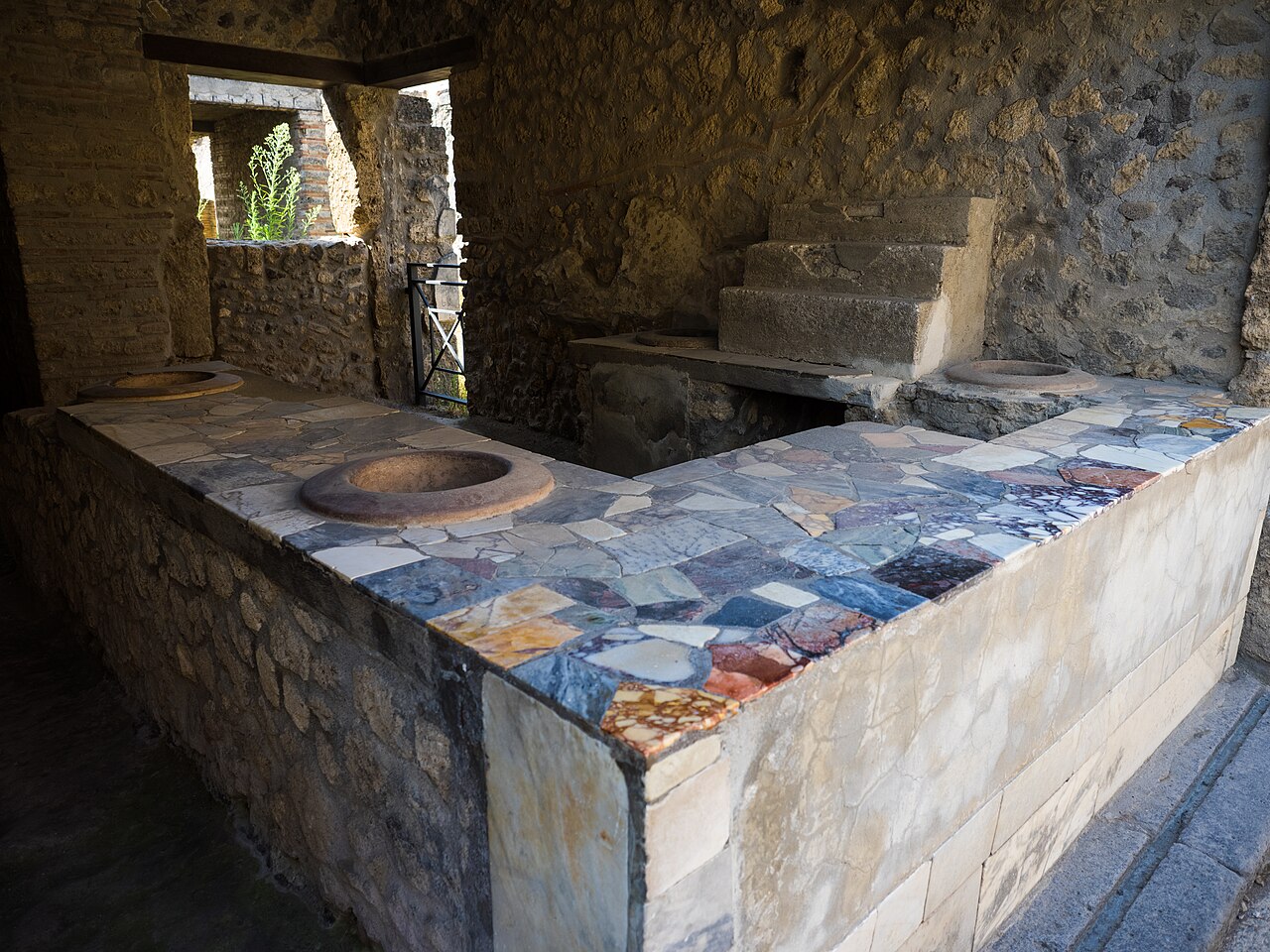 Sarahhoa, CC BY-SA 2.0, Wikimedia Commons
Sarahhoa, CC BY-SA 2.0, Wikimedia Commons
Careers In Pompeii
Pompeii was a diverse city, flush with many options for work. These roles could include carpenters, actors, surveyors, gem-workers, architects, innkeepers, perfume sellers, and laundry men.
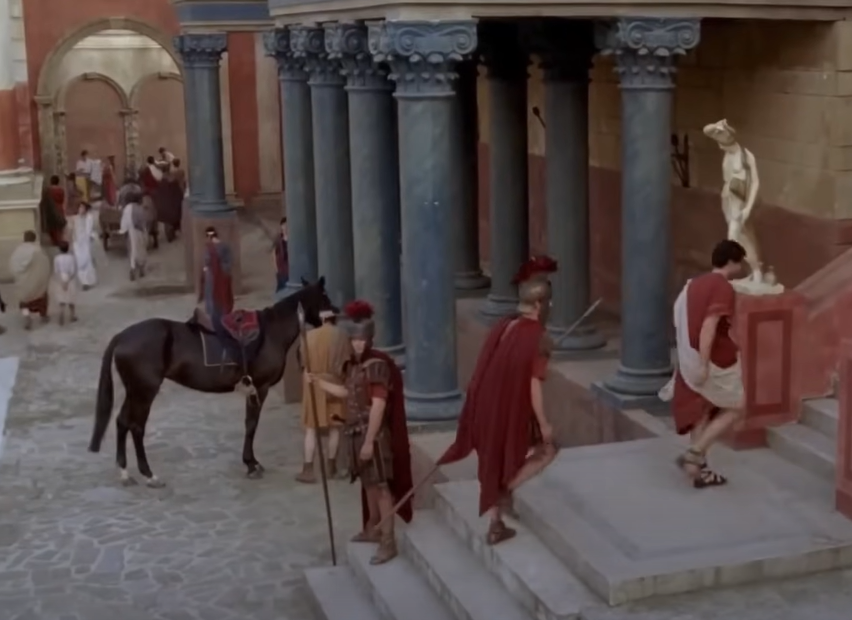 Janus Media, Pompei, ieri, oggi, domani (2007)
Janus Media, Pompei, ieri, oggi, domani (2007)
Careers In Pompeii
While many of the careers are familiar to us and have a modern equivalent, Pompeii did have the odd job that we would find bizarre. One of those jobs was the “public pig keeper”, presumably to keep pigs.
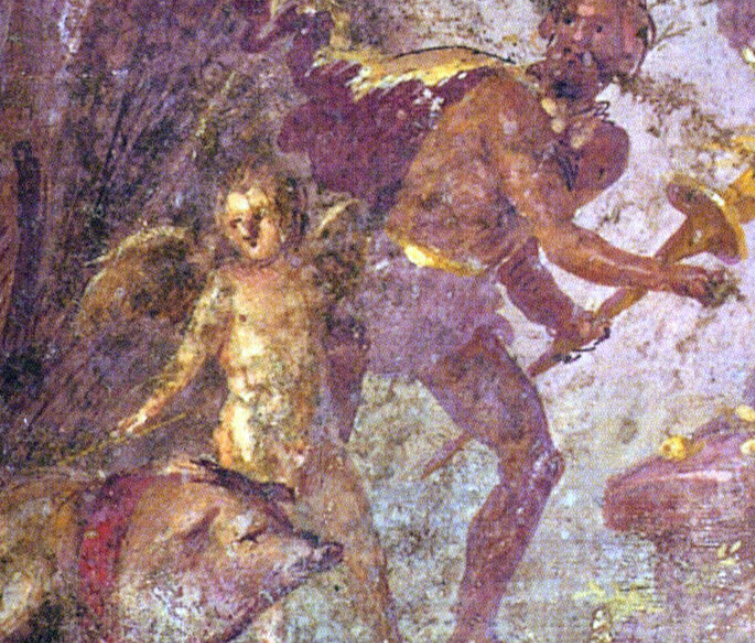 WolfgangRieger, Wikimedia Commons
WolfgangRieger, Wikimedia Commons
Careers In Pompeii
While Pompeii was considered a fairly prosperous city, few of these jobs were expected to earn big money. For the most part, they offered modest incomes that provided enough to keep you housed and fed.
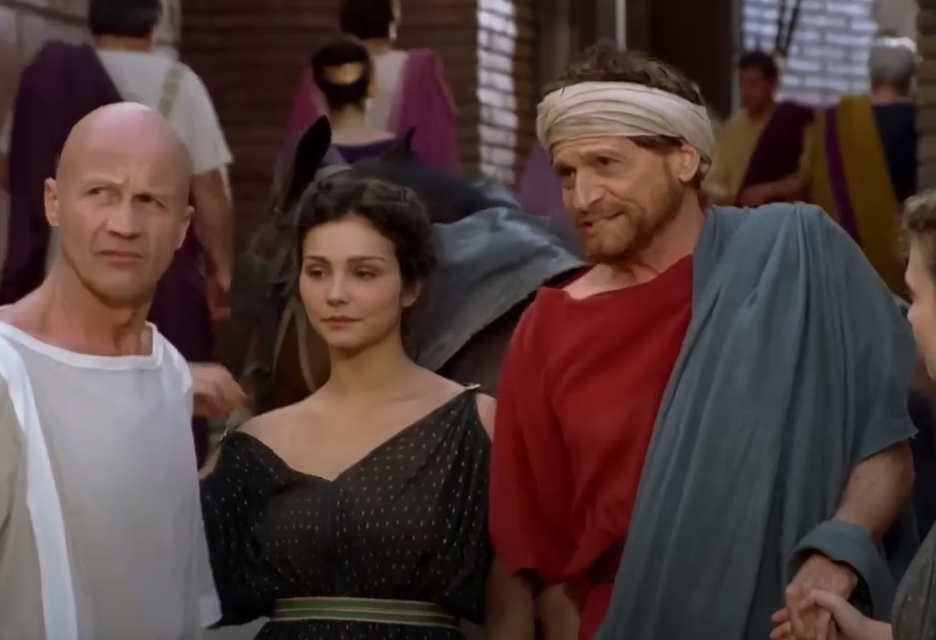 Janus Media, Pompei, ieri, oggi, domani (2007)
Janus Media, Pompei, ieri, oggi, domani (2007)
The Wealthy Of Pompeii
For the wealthy, life in Pompeii could be quite comfortable. They often owned large homes that may have been dark inside but boasted plenty of garden space. One of the homes in the town was as big as some palaces occupied by kings of the ancient world.
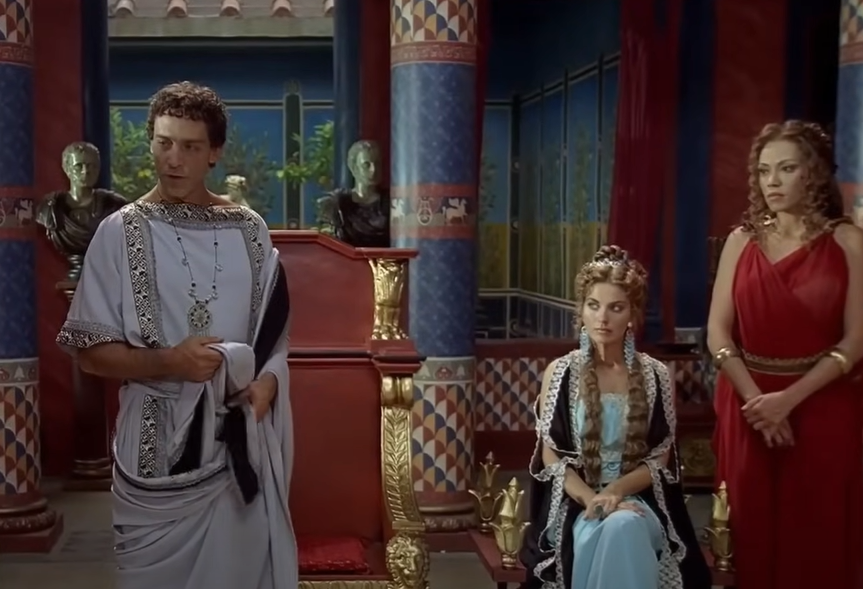 Janus Media, Pompei, ieri, oggi, domani (2007)
Janus Media, Pompei, ieri, oggi, domani (2007)
The Wealthy Of Pompei
If you were wealthy in Pompeii, this would be indicated by land. Most of those who were wealthy in Pompeii also had country property as well, which would have been used for growing or grazing sheep.
 Janus Media, Pompei, ieri, oggi, domani (2007)
Janus Media, Pompei, ieri, oggi, domani (2007)
The Poor Of Pompeii
However, if you were not wealthy, then you were living in much different conditions. Most of the poor lived in cramped service quarters or a single room above their shop. They’d have little more space than what was needed for a family to sleep.
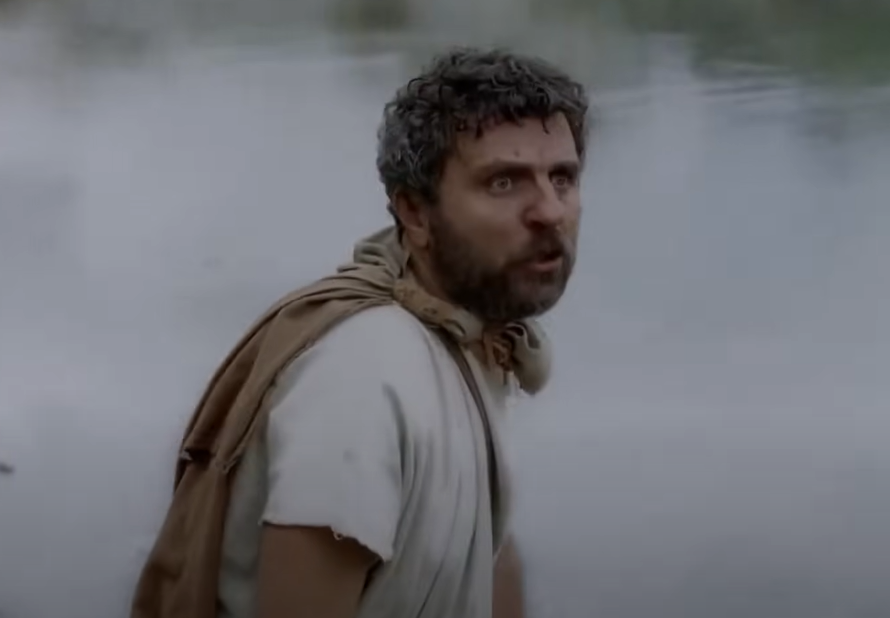 Janus Media, Pompei, ieri, oggi, domani (2007)
Janus Media, Pompei, ieri, oggi, domani (2007)
Pompeiian Entertainment
Pompeii had two theaters and one amphitheater. Their amphitheater is the earliest to survive anywhere in the world, likely preserved by the ash. There was a vibrant and varied range of entertainment for those who could attend.
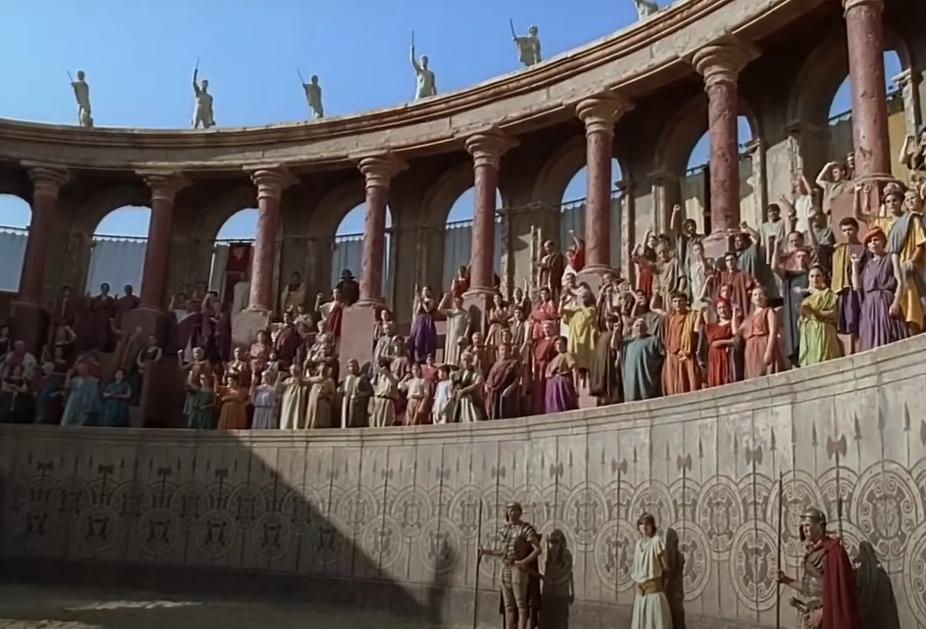 Janus Media, Pompei, ieri, oggi, domani (2007)
Janus Media, Pompei, ieri, oggi, domani (2007)
Pompeiian Entertainment
There was something for everyone at these entertainment venues. They occasionally held gladiator shows and wild beast hunts. Alternatively, they would feature plays, mimes, and ancient pantomime, which involved music and dance, similar to ballet.
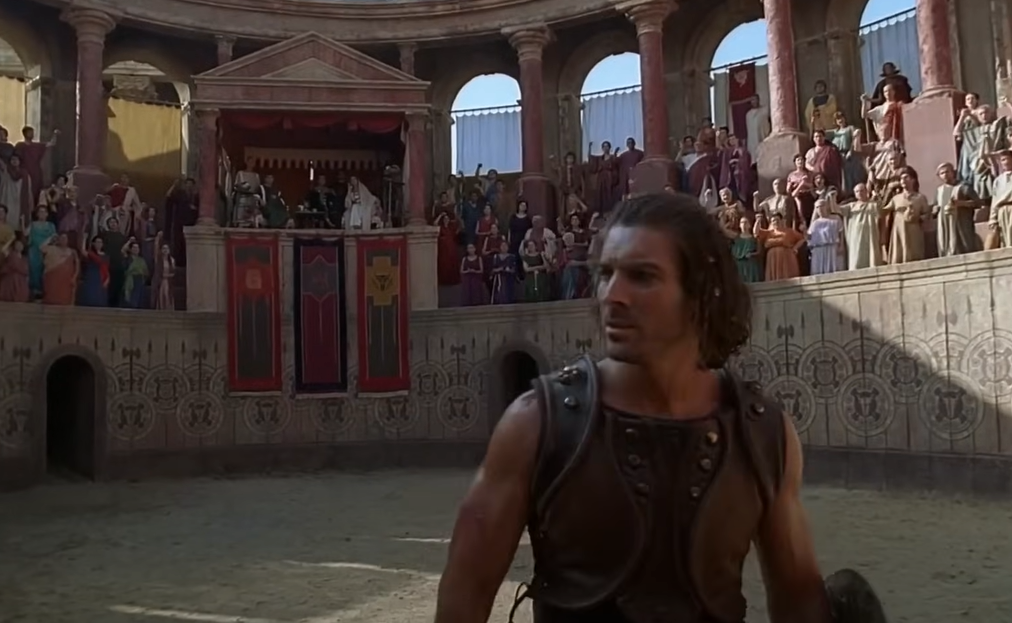 Janus Media, Pompei, ieri, oggi, domani (2007)
Janus Media, Pompei, ieri, oggi, domani (2007)
The Mystery Of The Upstairs
While much of Pompeii was saved due to the ash that buried the town when Vesuvius Erupted, this did not include the upstairs parts of buildings. Most of the upper stories of the homes were destroyed in the blast that tore through the city. Surviving stairs suggest that there was an upstairs area, but without proper evidence, historians can only guess what they were used for.
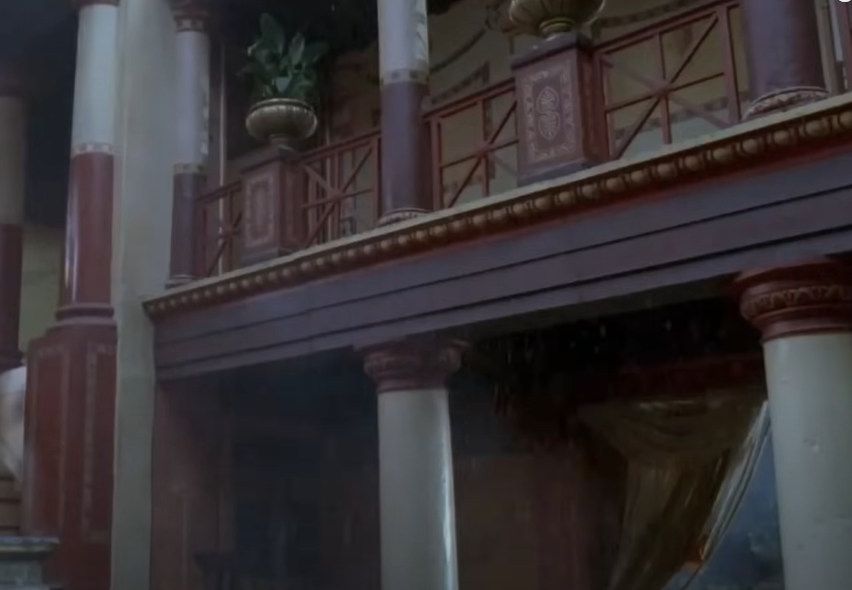 Janus Media, Pompei, ieri, oggi, domani (2007)
Janus Media, Pompei, ieri, oggi, domani (2007)
Could They Read In Pompeii?
This is an interesting question that is disputed among historians. Some historians say that as low as 20% of the male population could read. However, the evidence suggests otherwise.
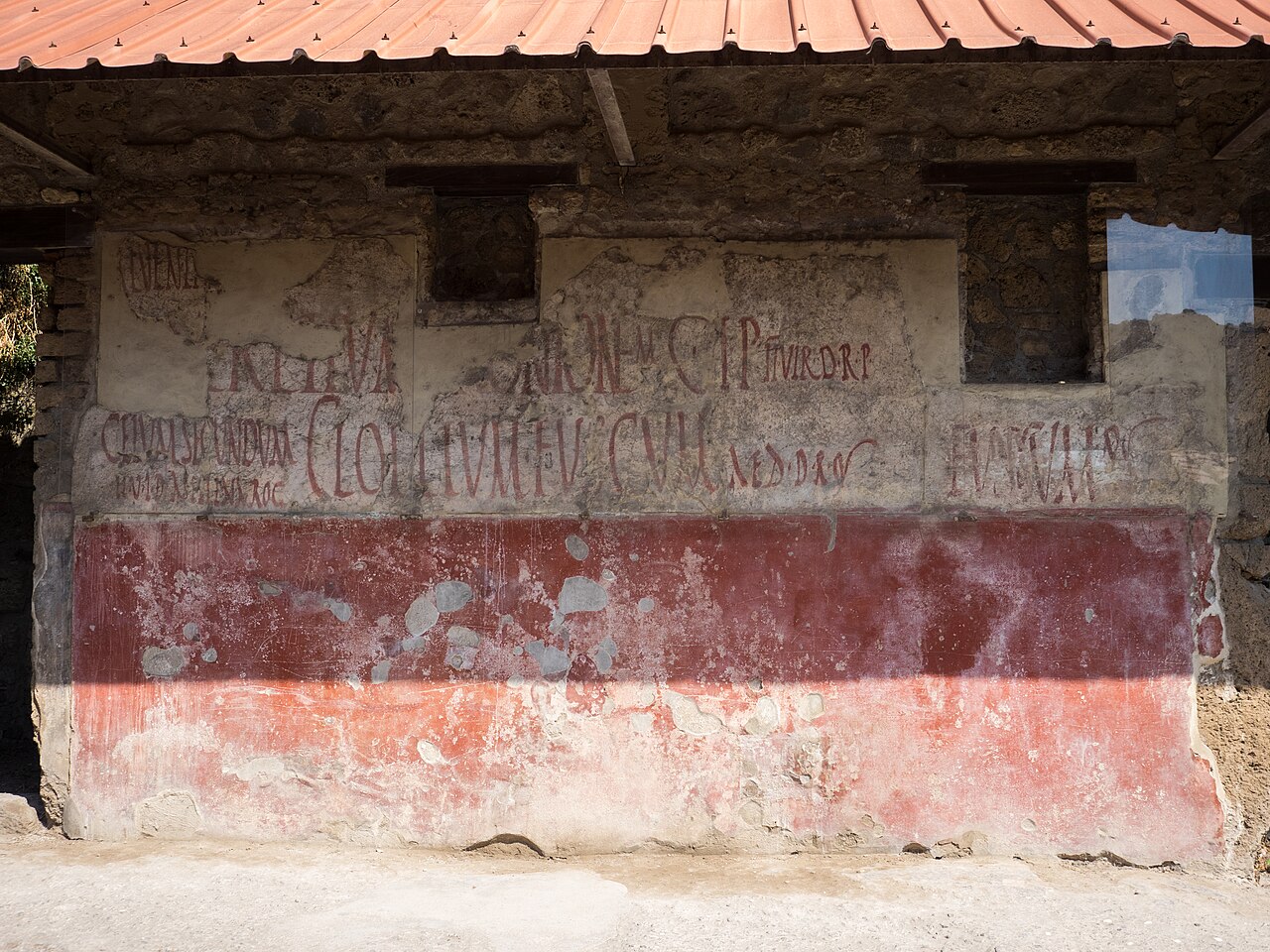 Sarahhoa, CC BY-SA 2.0, Wikimedia Commons
Sarahhoa, CC BY-SA 2.0, Wikimedia Commons
Could They Read In Pompeii?
The walls of Pompeii are covered in writing. These messages range from adverts for shows and campaign posters to personal messages. It is the volume and variety of these personal, mundane messages that suggest more people could read.
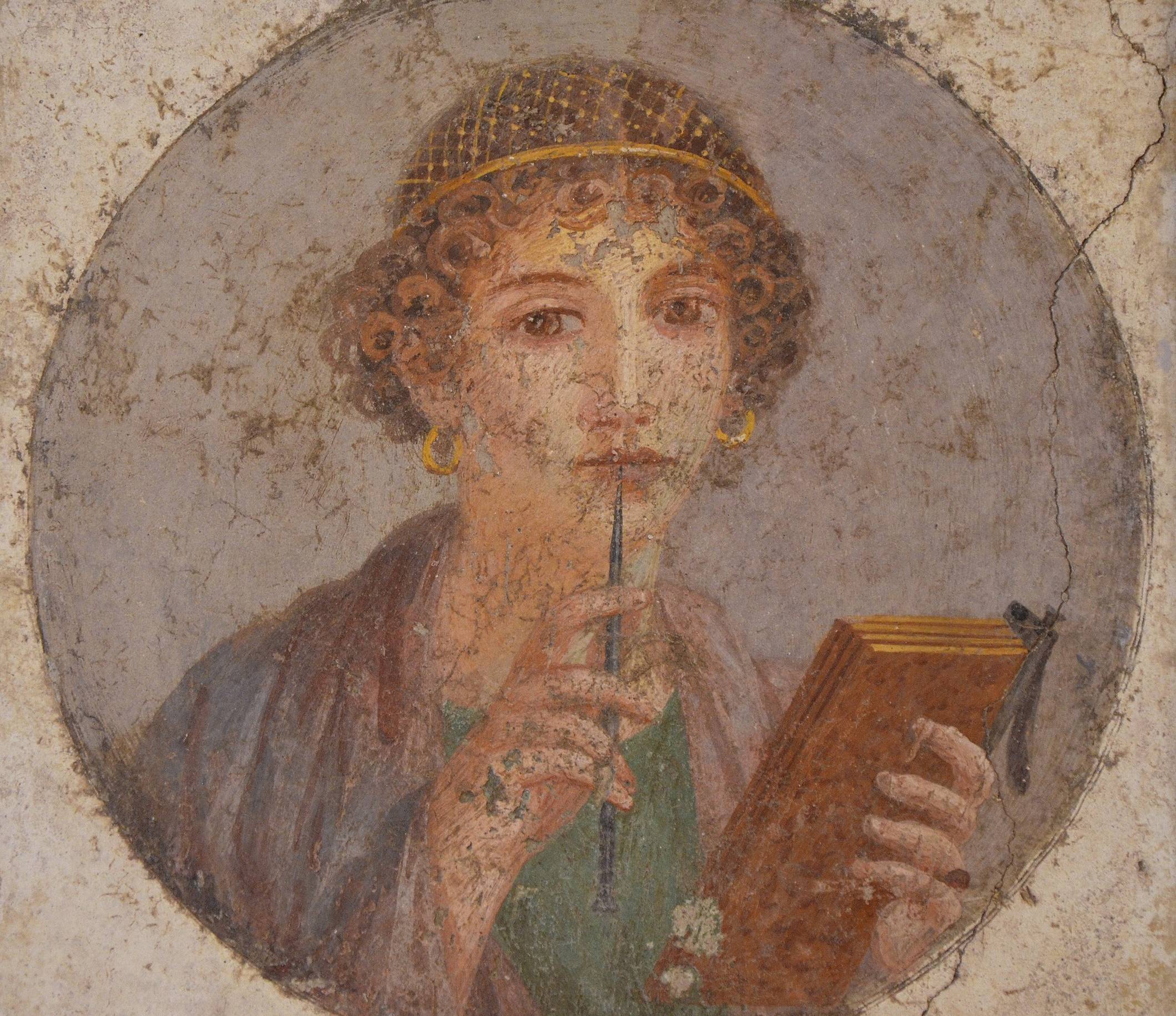 Naples National Archaeological Museum, CC BY-SA 2.0, Wikimedia Commons
Naples National Archaeological Museum, CC BY-SA 2.0, Wikimedia Commons
You May Also Like:
The Brutal Realities Of Ancient Rome
30 Ancient Ruins That Still Amaze Travelers

